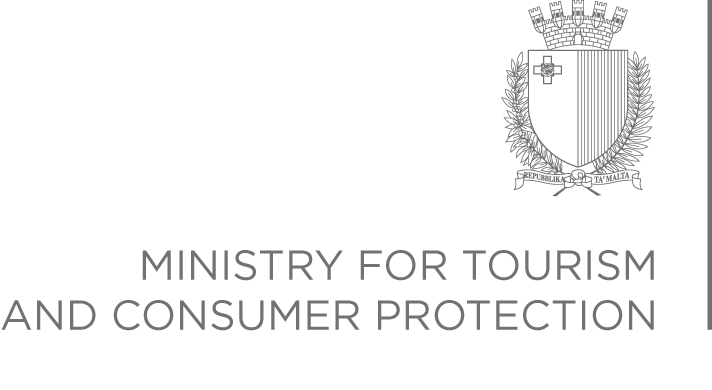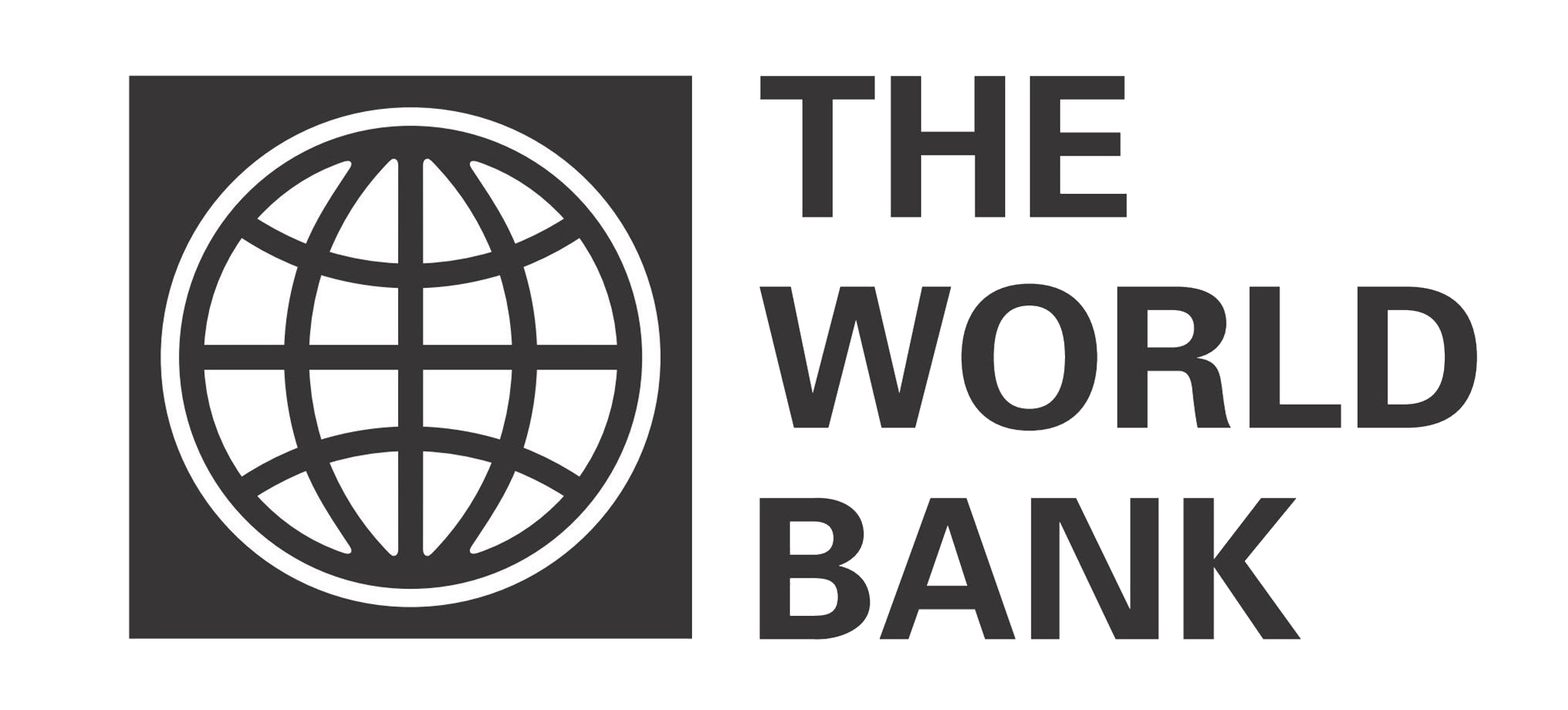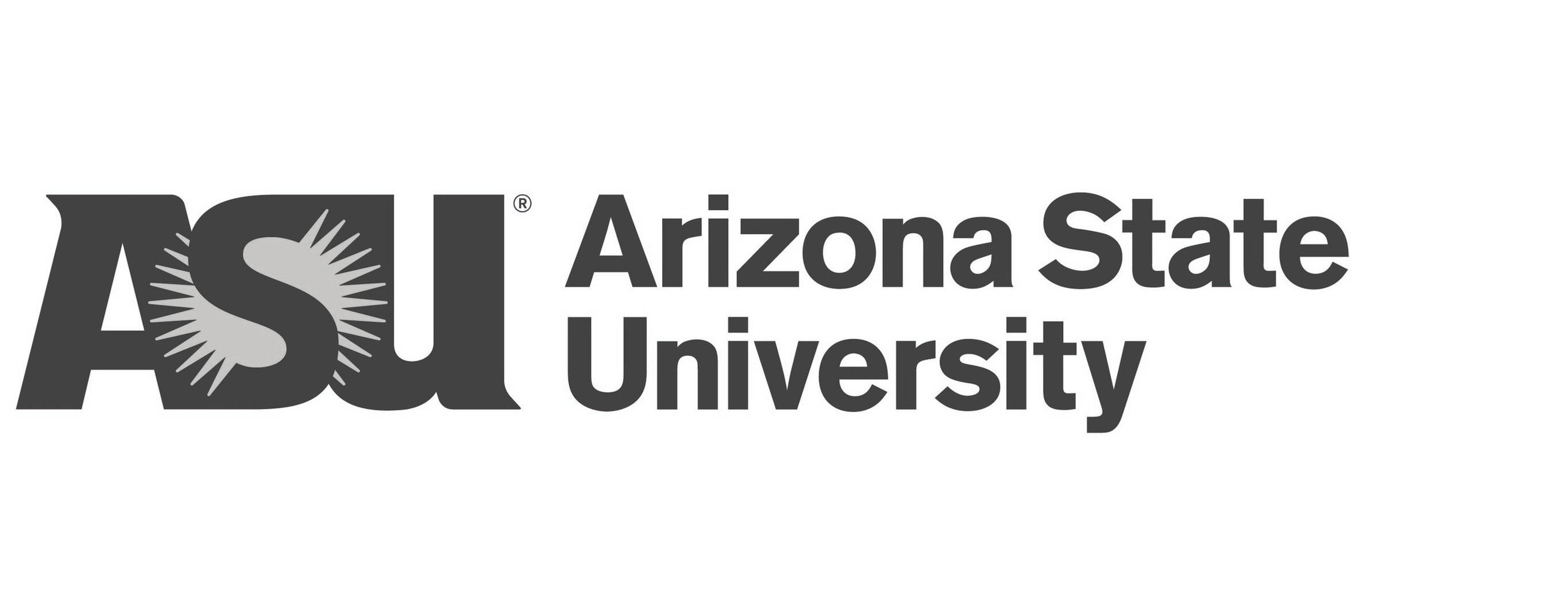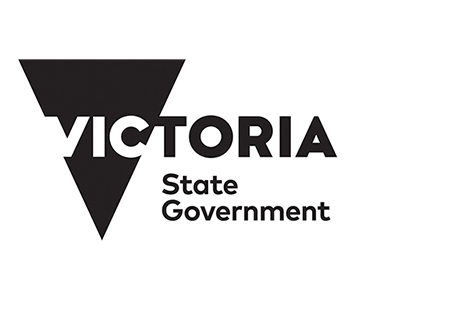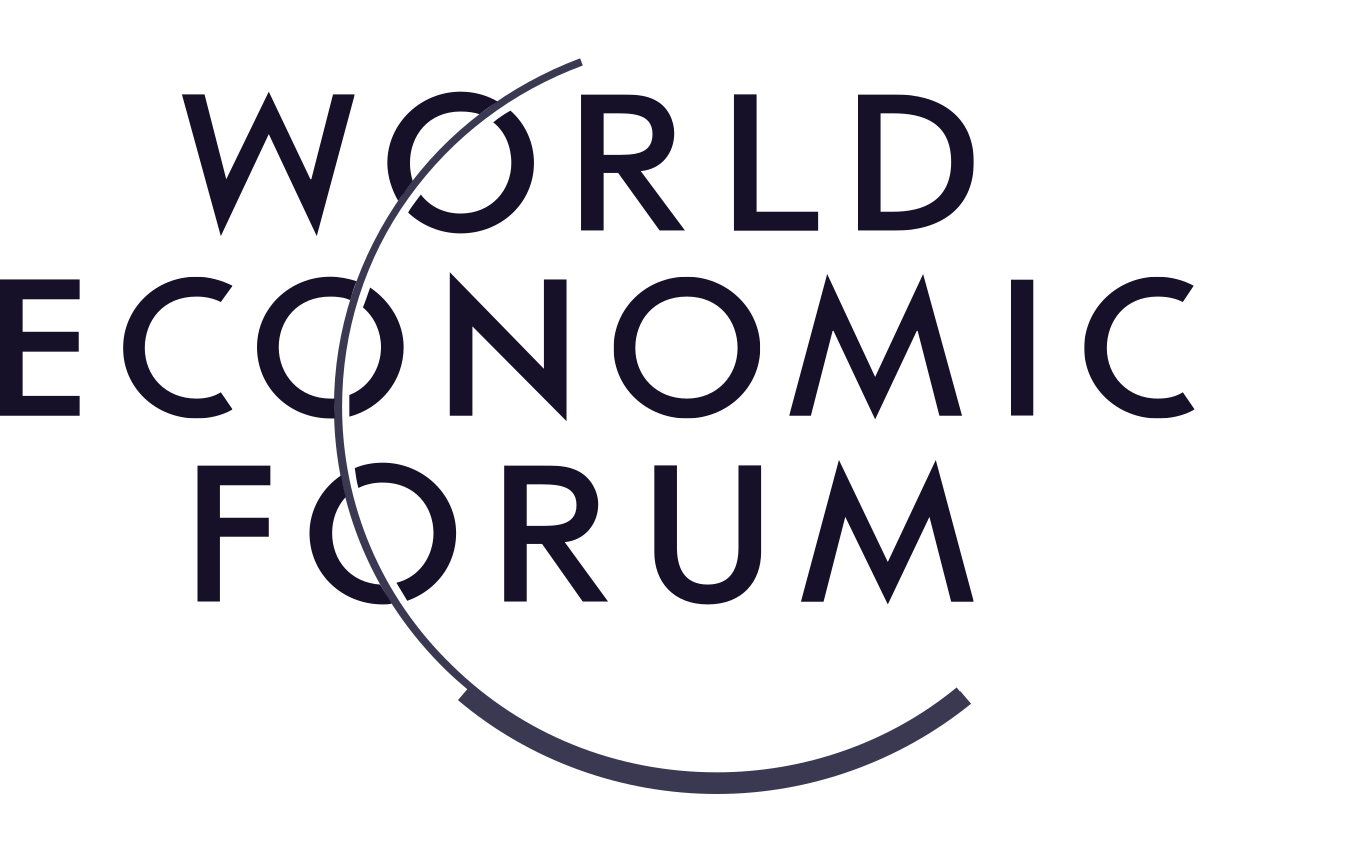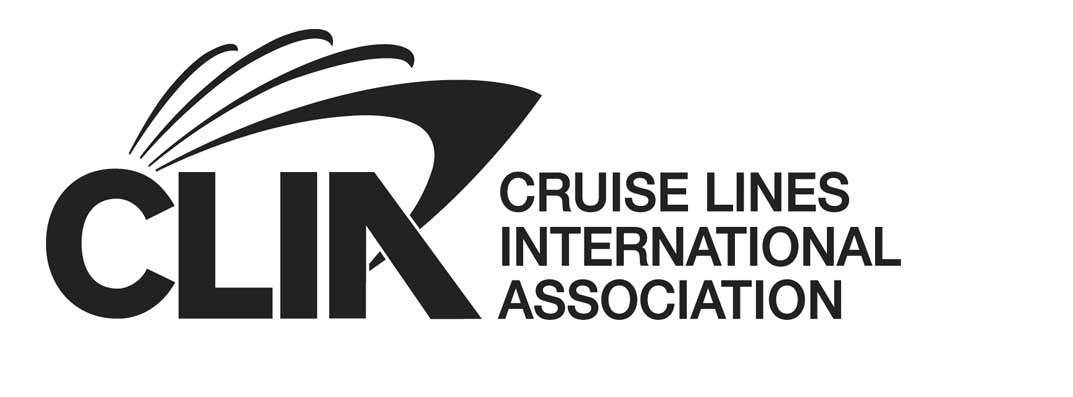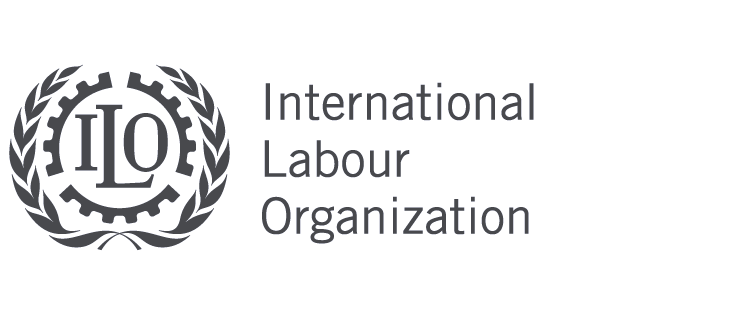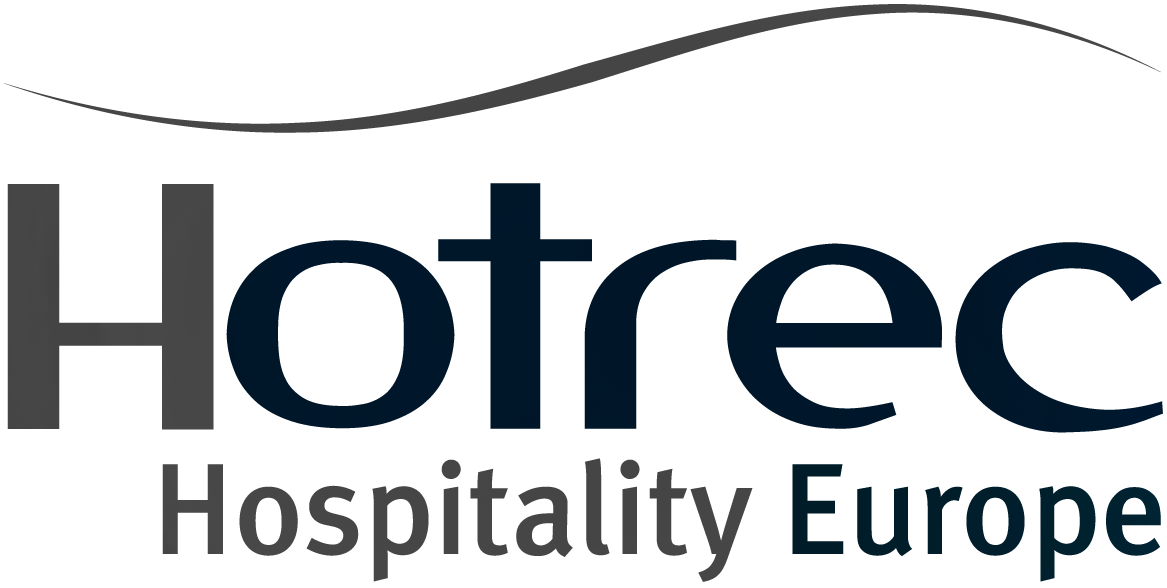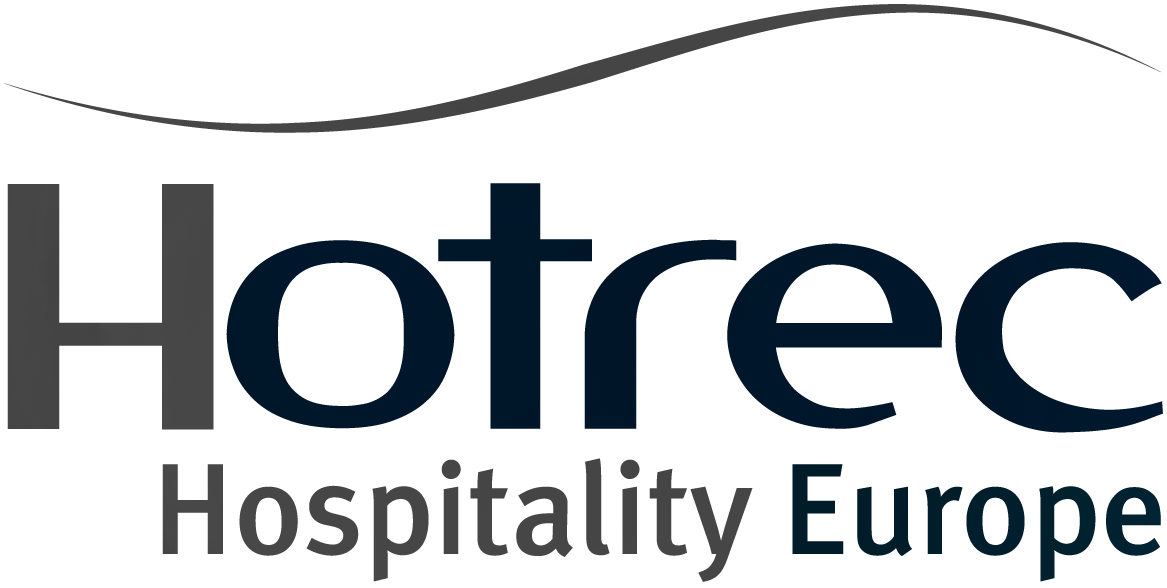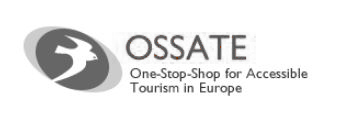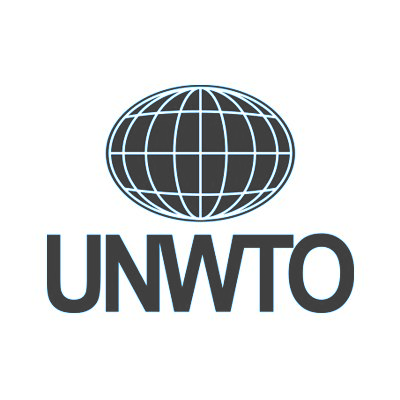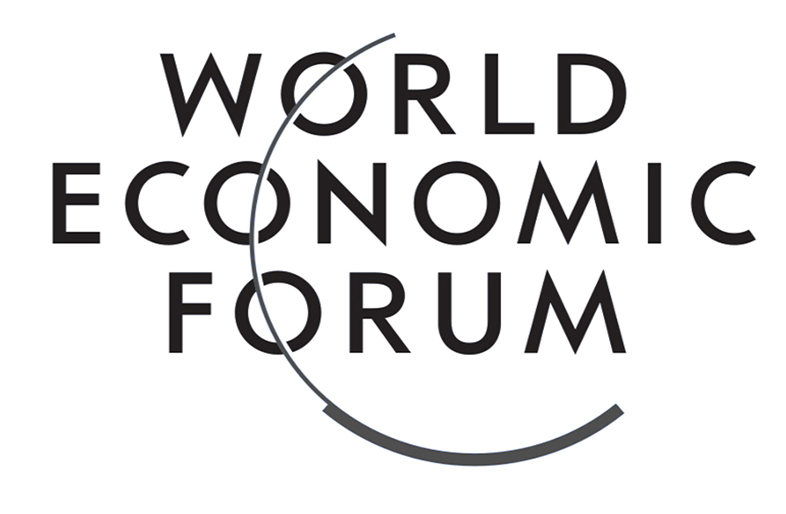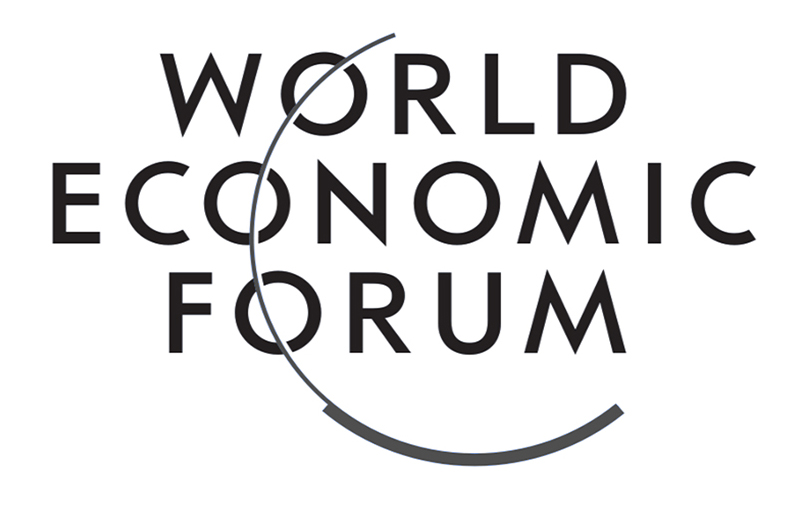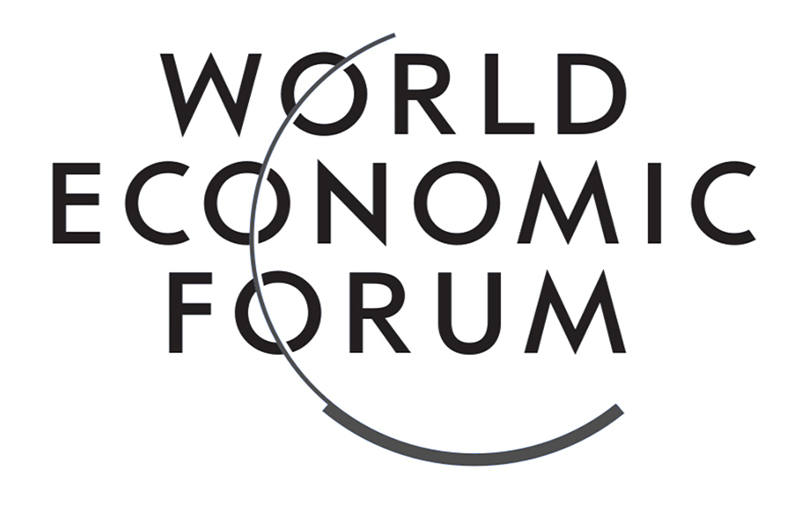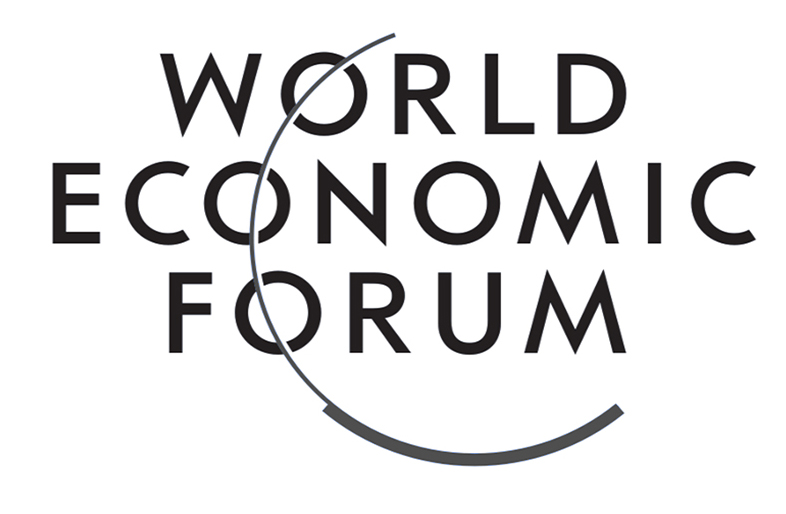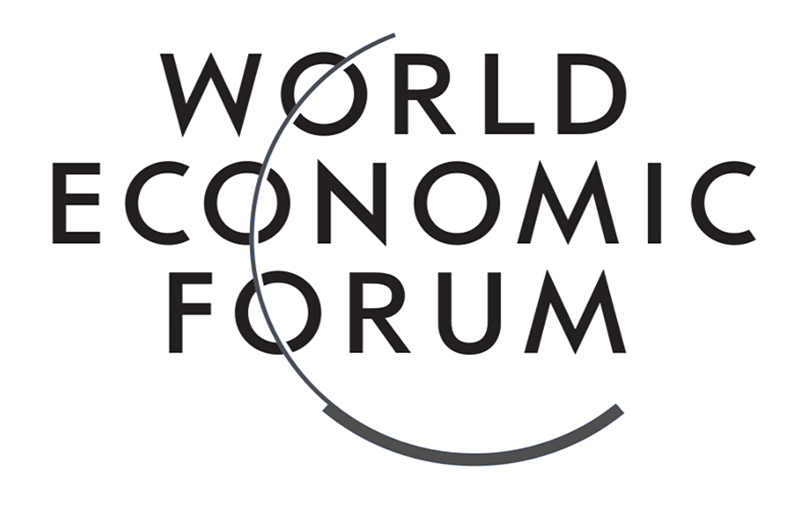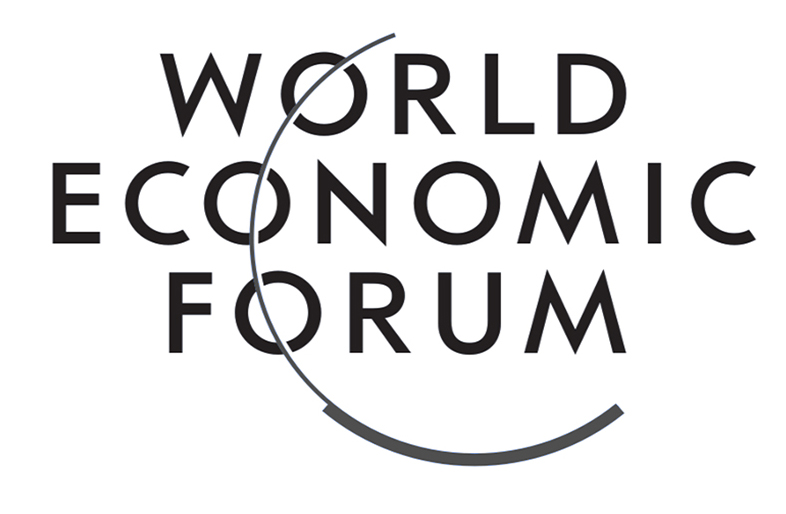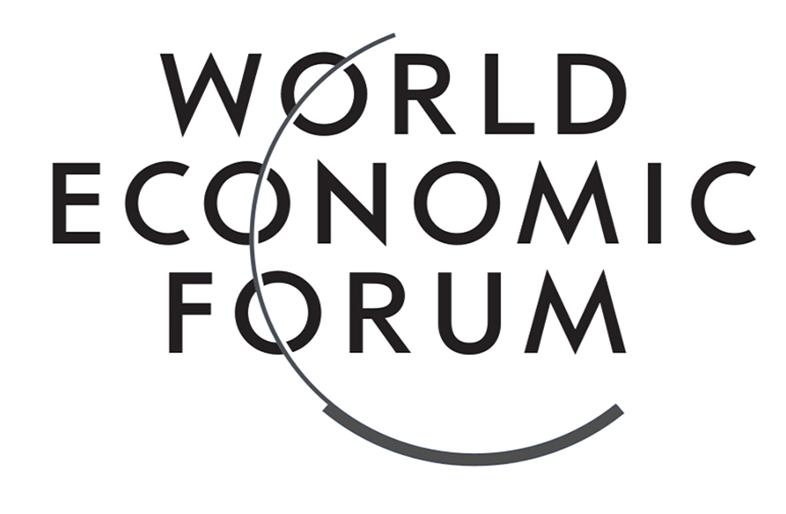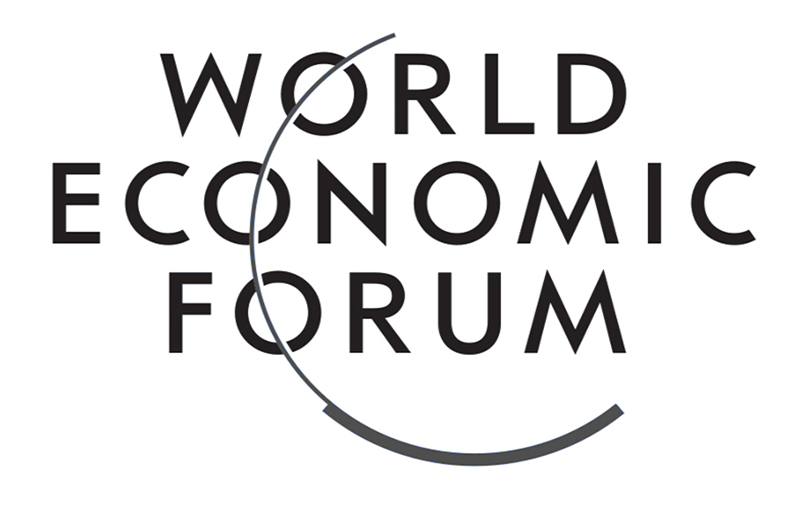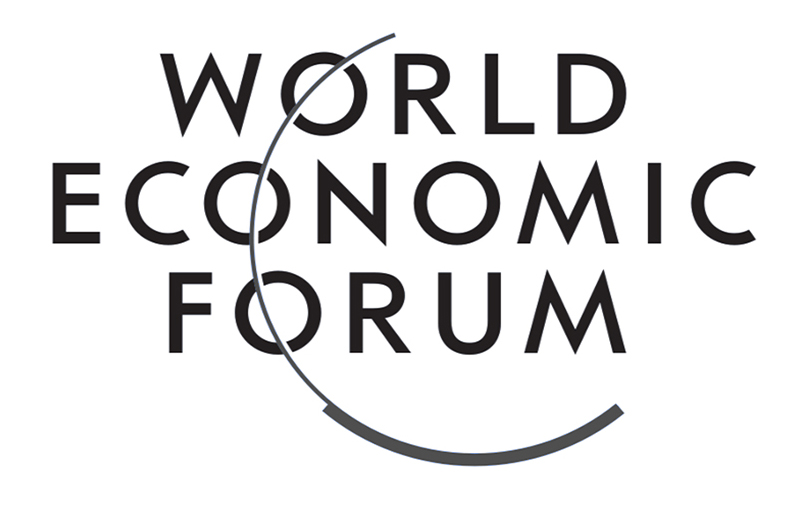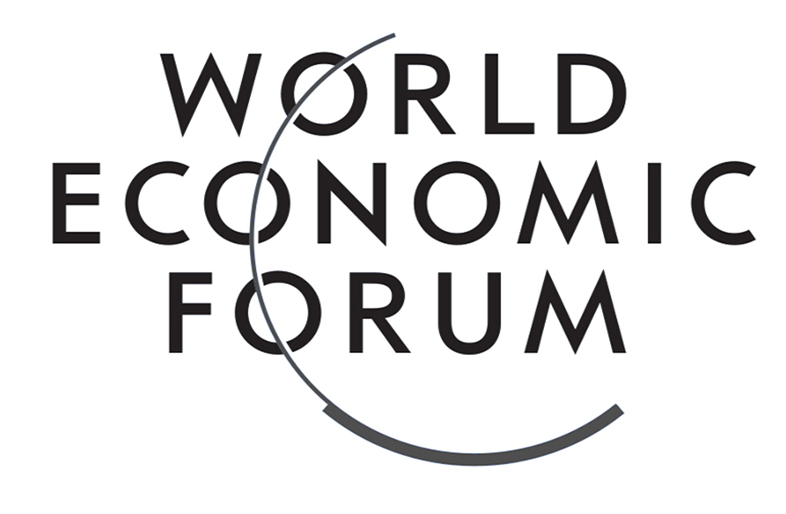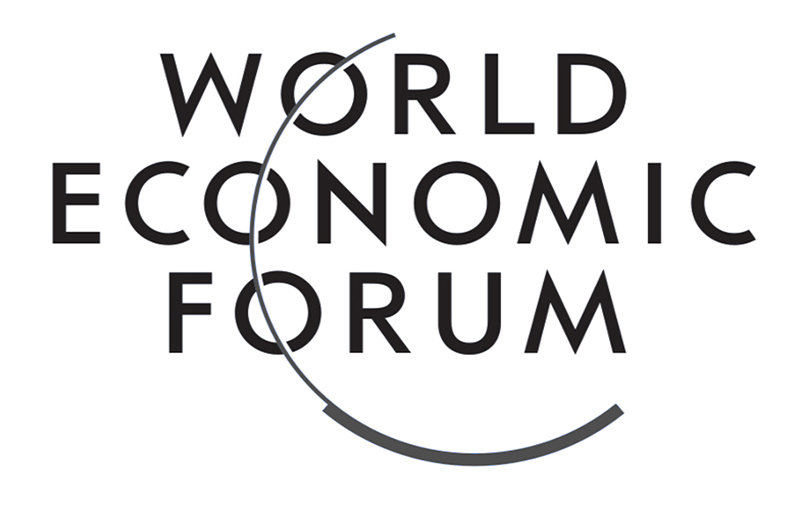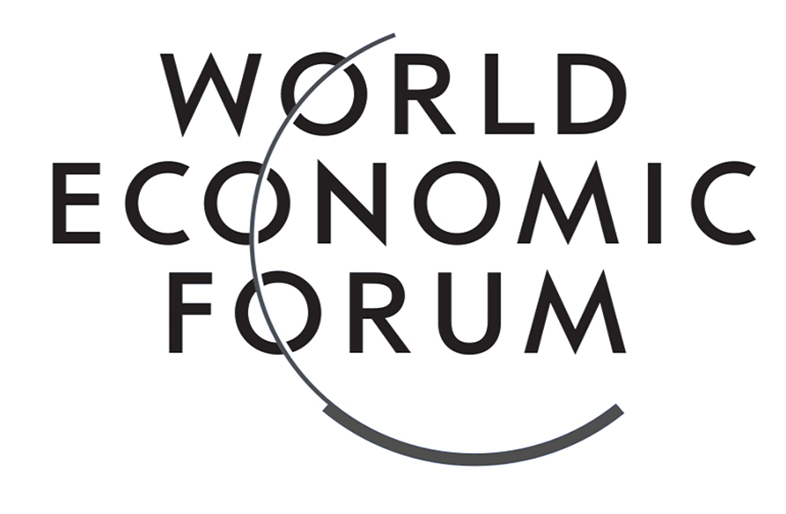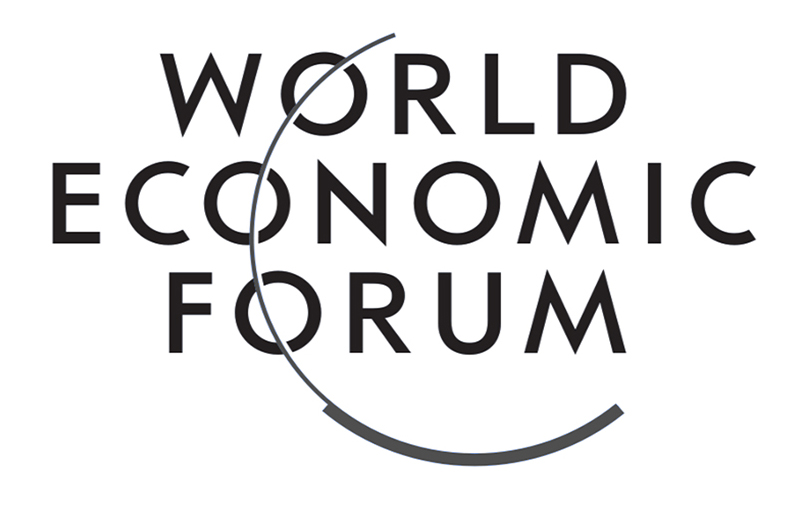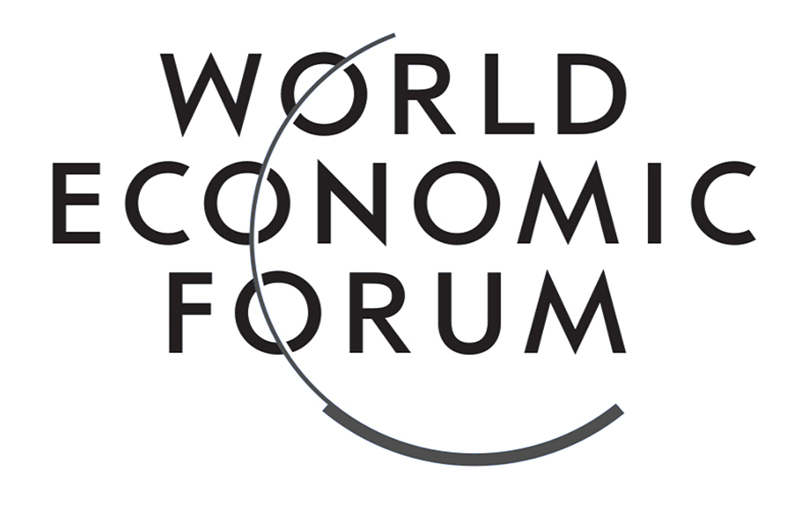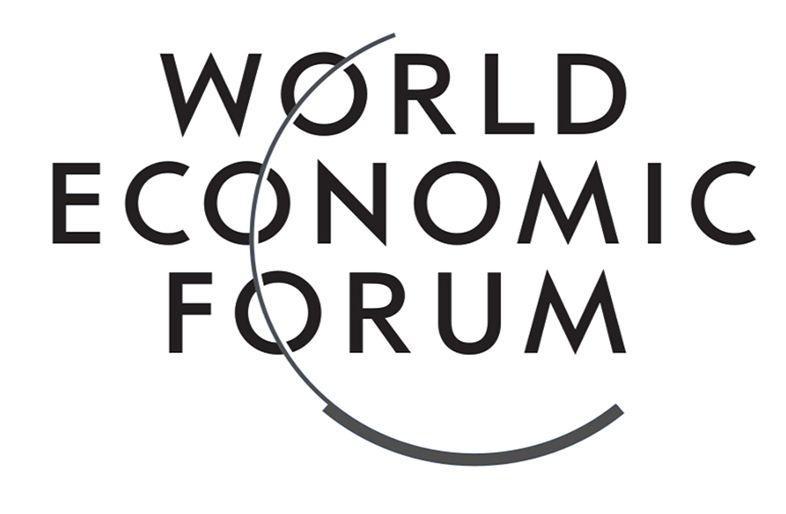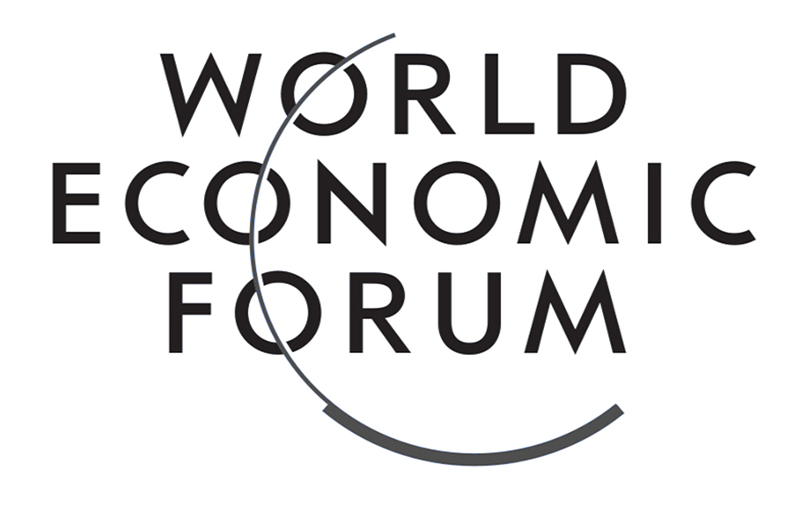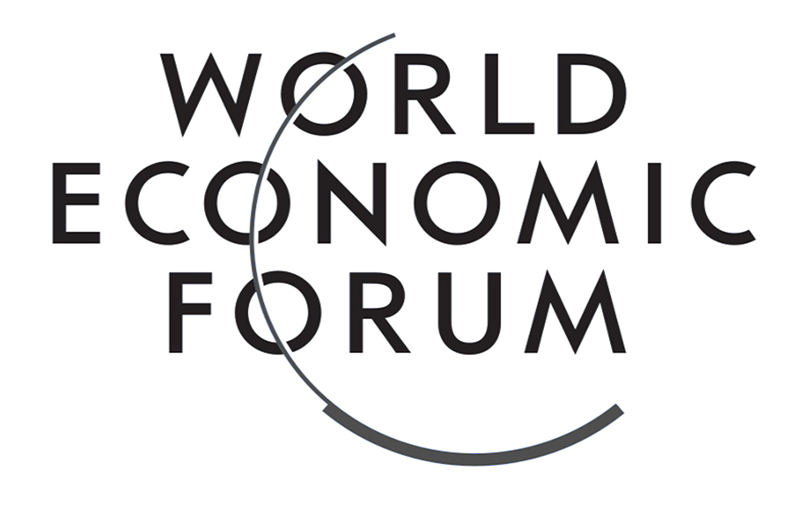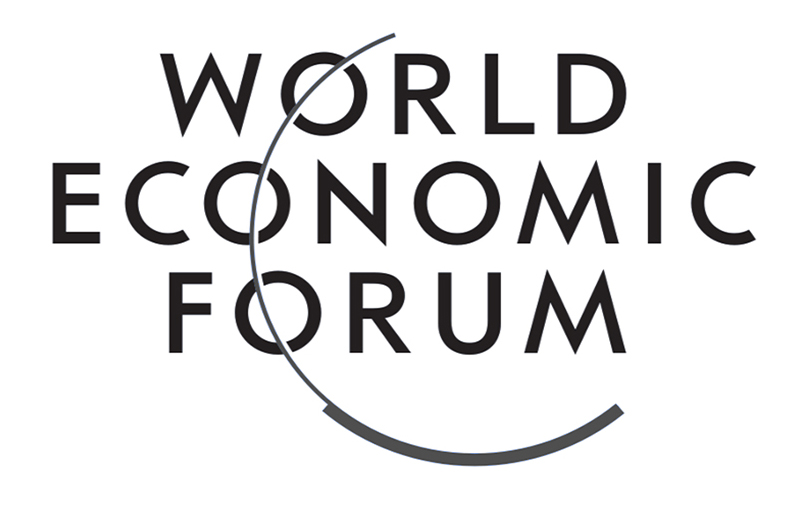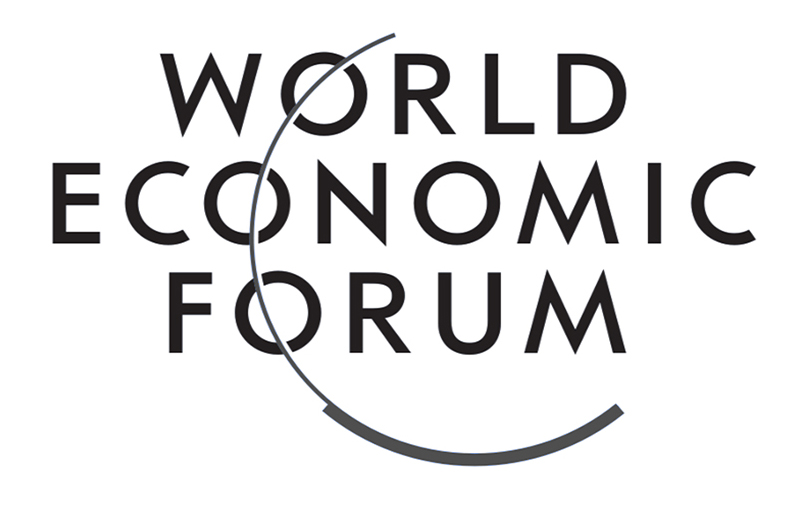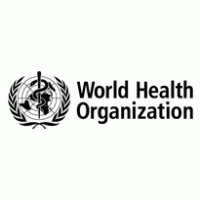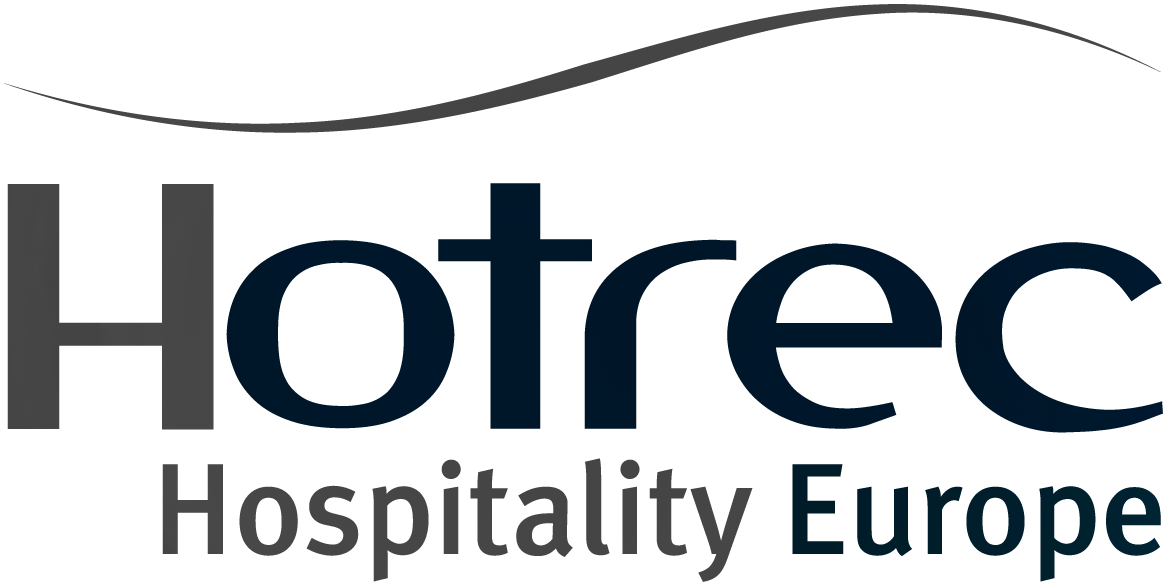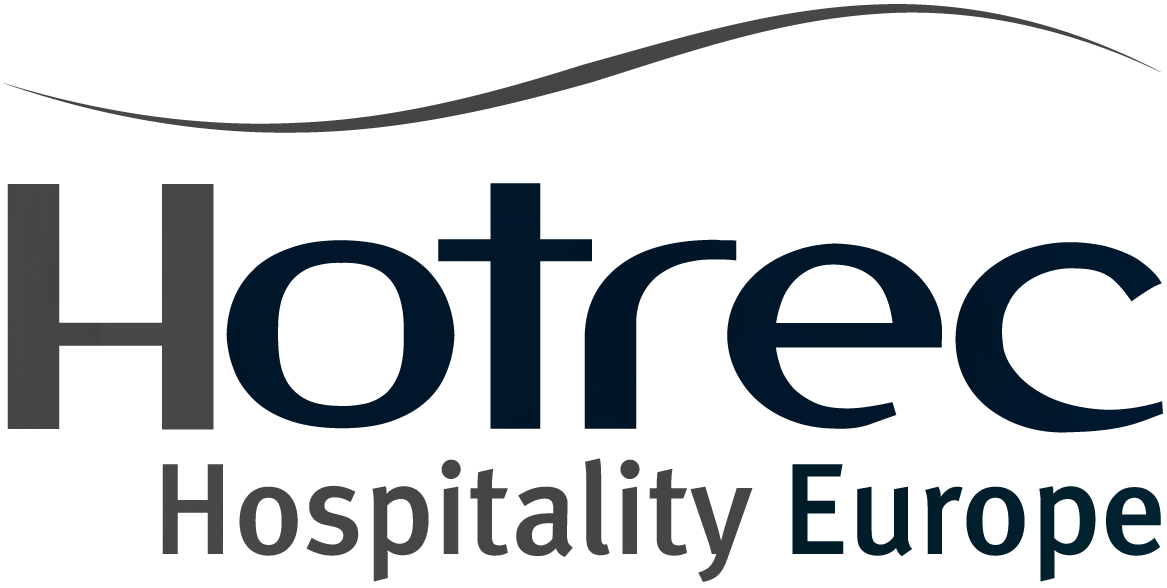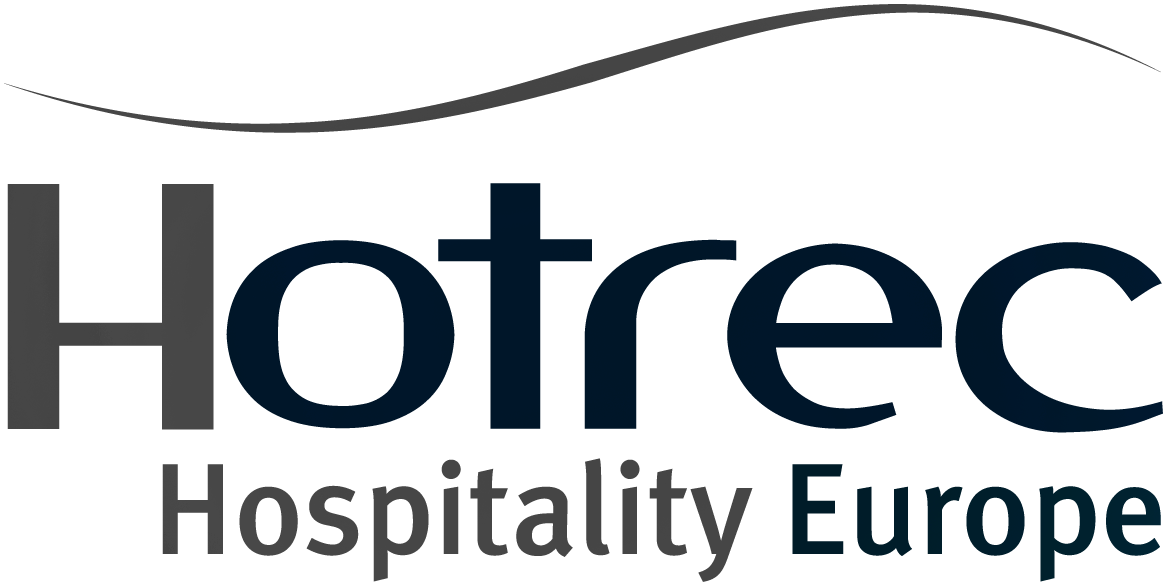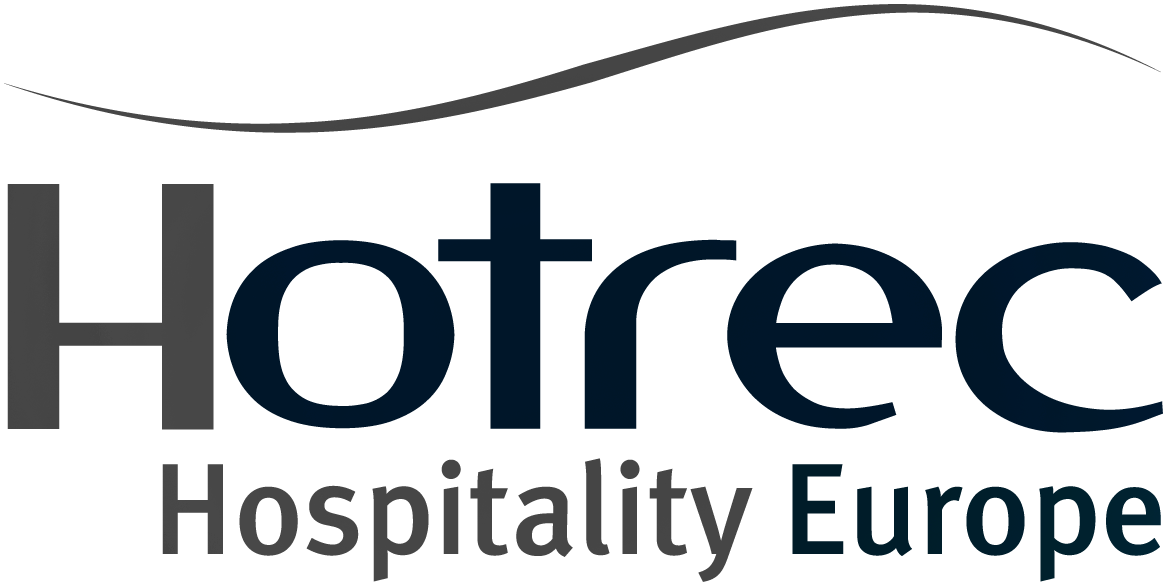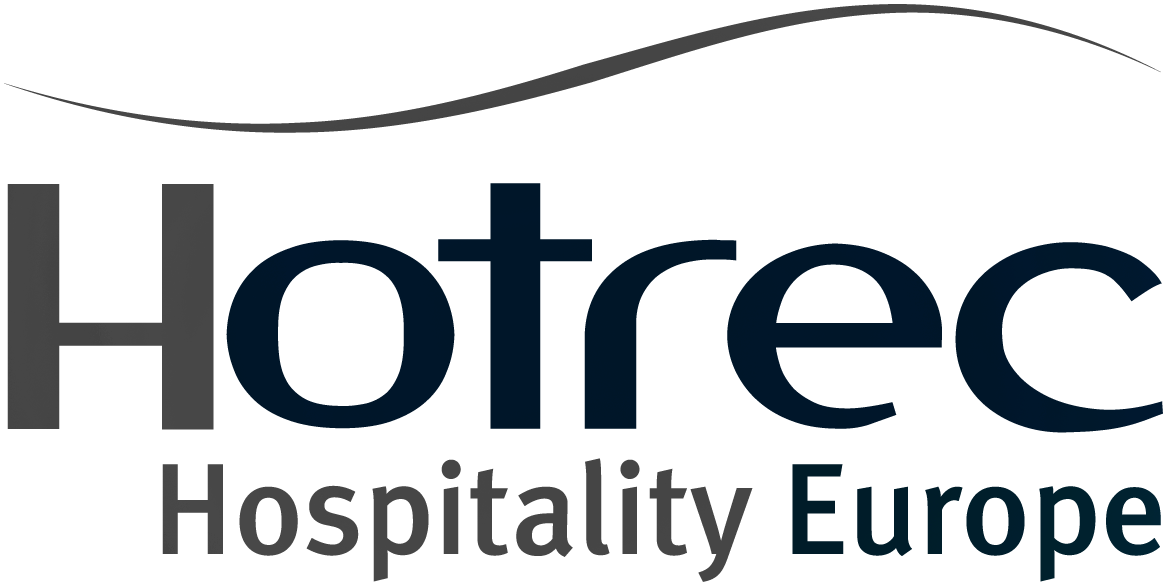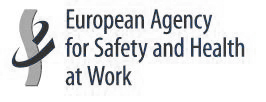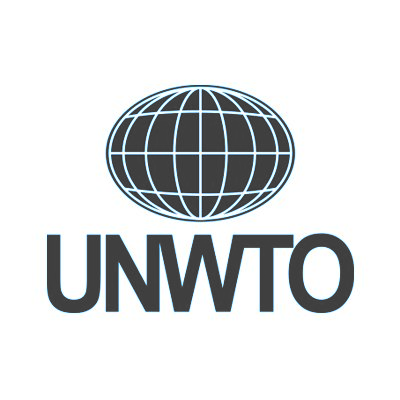Filters
Search Programme
Programme Categories
- Accessible Tourism ( 4 )
- Coronavirus (COVID-19) ( 10 )
- Economy ( 8 )
- Fashion ( 4 )
- Food & Beverage ( 1 )
- HOTREC ( 6 )
- Innovation and Entrepreneurship ( 2 )
- Law ( 1 )
- Policy Papers ( 4 )
- Reports ( 29 )
- Sustainability ( 4 )
- Tourism and Hospitality ( 3 )
- Trade and Development ( 7 )
- Transport and Mobility ( 2 )
Originally, tourism was the realm of the privileged few who travelled infrequently has now grown not only to encompass hundreds of millions of people who travel annually, but has also expanded in terms of frequency of travel and reasons to travel for the individuals concerned.
In an increasingly globalised world, the existence of a worldwide calendar of events means that travellers are increasingly willing to roam around the world to participate in cultural, sports, music, festivals and other events. Destinations need to plug into this area which is forecast to grow rapidly in coming years.
In an increasingly globalised world, the existence of a worldwide calendar of events means that travellers are increasingly willing to roam around the world to participate in cultural, sports, music, festivals and other events. Destinations need to plug into this area which is forecast to grow rapidly in coming years.
- 0
- 0
The tourism economy has been heavily hit by the coronavirus (COVID-19) pandemic, and measures introduced to contain its spread. Depending on the duration of the crisis, revised scenarios indicate that the potential shock could range between a 60-80% decline in the international tourism economy in 2020. Beyond immediate measures to support the tourism sector, countries are also shifting to develop recovery measures. These include considerations on lifting travel restrictions, restoring traveller confidence and rethinking the tourism sector for the future.
- 0
- 0
If you are also thinking about how your business should confront the COVID-19 crisis or if you have already taken the first actions to adapt to the “new normal”, in this article I am going to explain several interesting measures that I have read, heard and seen from other professionals in the hotel & tourism sector who work in many of the top international hotel chains.
- 0
- 0
In this twelfth annual edition, Tracking the trends 2020 once again features insights, strategies, and for- ward-thinking ideas that mining companies can leverage to learn how to lead from the front and navigate this uncertainty. In addition to sharing real-world case studies and examples, Deloitte’s global mining profes- sionals share a wealth of lessons learned that companies can draw upon to reposition for the future. Thank you sincerely for your ongoing support, and we invite you to share with us your input and feedback.
- 0
- 0
Every industrial revolution was catalyzed by a major technological evolution. Today is no different. With 90 percent of the world’s data having been produced in the last two years and more than 26 billion smart devices in circulation, we are living in an era of unprecedented technological innovation—one that has spurred the Fourth Industrial Revolution.
- 0
- 0
We live in times characterized by change and volatility, yet as businesses we need to make investment decisions that will equip us to serve markets and consumers as they will be in 10 years time and beyond. This report is ambitious.
By drawing together insights into economic and demographic trends, considerations of finite resources and sustainability, and the ever more dramatic impact of technology on our daily lives, it sets out to make some predictions about how our attitudes and patterns of consumption will change over the next decade.
By drawing together insights into economic and demographic trends, considerations of finite resources and sustainability, and the ever more dramatic impact of technology on our daily lives, it sets out to make some predictions about how our attitudes and patterns of consumption will change over the next decade.
- 0
- 0
The measurement, reporting and disclosure of greenhouse gas emissions are becoming more mainstream, especially among larger corporations, followed by smaller operators. Major initiatives originate from both the public and private sectors, indicating widespread recognition of the need to address climate change. Several global reporting frameworks and standards for carbon reporting exist, and compatibility of measurement and accounting between them is improving to facilitate greater uptake.
The benefits of carbon reporting are widely known, and include reduced operational costs, enhanced brand value and better risk management. There is evidence that an increasing number of Travel and Tourism companies are engaging in environmental and carbon reporting. However, considering the size of the sector and its annual growth rates, reporting levels are still comparatively low, and quality is often insufficient. This is particularly so for the measurement of indirect emissions, which can be substantial.
It is expected that, in response to increasing pressure from external stakeholders, as well as mandatory reporting requirements, more Travel and Tourism companies will follow the lead of a growing number of highly committed frontrunners. Third-party verification of emissions has become more central, either as part of compliance or to avoid external criticism, including from travellers. The participation of Travel and Tourism in global reporting is particularly important, considering increasing information on the carbon intensity of travel and the significant contribution of tourism emissions to national and global inventories.
A range of tourism-specific tools are already available to assist companies in their reporting efforts. Several tools also assist in the development of climate change mitigation initiatives. Providing evidence of sustainable practices is beneficial, considering that a large proportion of travellers are aware of climate change and the impacts of travel, although detailed knowledge is often lacking. It has been argued that carbon calculators arean important (educational) tool to provide information to travellers. While there are several tourism-specific carbon calculators, comparative research has found that they often lack consistency and transparency, possibly leading to confusion among users.
Research is inconclusive regarding individuals’ propensity to reduce emissions or to purchase ‘carbon offsets’. Empirical evidence suggests that an uptake of offsetting options is in the lower single-digit percentage of travellers. These are motivated by their knowledge about negative impacts, pro-environmental attitudes, self-image and social norms. Some companies directly offer offsetting to their customers, but the value of such initiatives has not been evaluated. Participation in carbon offsetting schemes could be enhanced by integrating offsetting with booking at the time of purchase. A transparent and consistent approach to calculating and selling offsets should be part of such a scheme, as it enhances both credibility and convenience – key aspects in travellers’ decision making.
In conclusion, a combination of industry leadership on reporting, disclosure and reduction, along with an enabling policy environment (including mandatory schemes), is needed to accelerate progress toward reducing greenhouse gas (GHG) emissions from the Travel and Tourism sector. Customer support for low- carbon products exists, but greater pressure from the travelling public is currently limited due to a combination of lack of willingness to change behaviour, incomplete knowledge about impacts and a lack of readily available and easy-to-understand options.
The benefits of carbon reporting are widely known, and include reduced operational costs, enhanced brand value and better risk management. There is evidence that an increasing number of Travel and Tourism companies are engaging in environmental and carbon reporting. However, considering the size of the sector and its annual growth rates, reporting levels are still comparatively low, and quality is often insufficient. This is particularly so for the measurement of indirect emissions, which can be substantial.
It is expected that, in response to increasing pressure from external stakeholders, as well as mandatory reporting requirements, more Travel and Tourism companies will follow the lead of a growing number of highly committed frontrunners. Third-party verification of emissions has become more central, either as part of compliance or to avoid external criticism, including from travellers. The participation of Travel and Tourism in global reporting is particularly important, considering increasing information on the carbon intensity of travel and the significant contribution of tourism emissions to national and global inventories.
A range of tourism-specific tools are already available to assist companies in their reporting efforts. Several tools also assist in the development of climate change mitigation initiatives. Providing evidence of sustainable practices is beneficial, considering that a large proportion of travellers are aware of climate change and the impacts of travel, although detailed knowledge is often lacking. It has been argued that carbon calculators arean important (educational) tool to provide information to travellers. While there are several tourism-specific carbon calculators, comparative research has found that they often lack consistency and transparency, possibly leading to confusion among users.
Research is inconclusive regarding individuals’ propensity to reduce emissions or to purchase ‘carbon offsets’. Empirical evidence suggests that an uptake of offsetting options is in the lower single-digit percentage of travellers. These are motivated by their knowledge about negative impacts, pro-environmental attitudes, self-image and social norms. Some companies directly offer offsetting to their customers, but the value of such initiatives has not been evaluated. Participation in carbon offsetting schemes could be enhanced by integrating offsetting with booking at the time of purchase. A transparent and consistent approach to calculating and selling offsets should be part of such a scheme, as it enhances both credibility and convenience – key aspects in travellers’ decision making.
In conclusion, a combination of industry leadership on reporting, disclosure and reduction, along with an enabling policy environment (including mandatory schemes), is needed to accelerate progress toward reducing greenhouse gas (GHG) emissions from the Travel and Tourism sector. Customer support for low- carbon products exists, but greater pressure from the travelling public is currently limited due to a combination of lack of willingness to change behaviour, incomplete knowledge about impacts and a lack of readily available and easy-to-understand options.
- 0
- 0
The COVID-19 pandemic presents an unprecedented humanitarian crisis which has quickly developed into a severe global economic downturn that will have long-lasting consequences. The travel and tourism sector was one of the first sectors to feel the impact and is one that will likely be among the last sectors to experience a meaningful recovery. There is substantial uncertainty on what will happen, and a lot will depend on exogenous factors such as the availability of a vaccine in the medium term, the health situation in key feeder markets and changing attitudes to travelling in the long-term across all segments including leisure, business and mass events.
What is clear, however, is that the road to recovery requires coordinated actions across all levels and stakeholders, local and abroad. The tourism sector, a key pillar of the economy, has a critical role to play in our economic recovery.
What is clear, however, is that the road to recovery requires coordinated actions across all levels and stakeholders, local and abroad. The tourism sector, a key pillar of the economy, has a critical role to play in our economic recovery.
- 0
- 0
Tourism is a powerful vehicle for economic growth and job creation all over the world. The tourism sector is directly and indirectly responsible (WTTC 2011) for 8.8 percent of the world’s jobs (258 million); 9.1 percent of the world’s GDP (US$6 trillion); 5.8 percent of the world’s exports (US$1.1 trillion); and 4.5 percent of the world’s investment (US$652 billion). The World Travel & Tourism Council estimates that 3.8 million jobs (including 2.4 million indirect jobs) could be created by the tourism industry in Sub- Saharan Africa (SSA) over the next 10 years.
- 0
- 0
The American tourism industry is thriving, International and domestic travel is currently contribution over $1.1 trillion to the United States GDP every year. When looking at the annual travel split of domestic and international travel, Americans domestically traveling within the country last year made up the lions share, totaling 2.29 Billion, a 2% increase from the previous year. Following past US tourism trends, the volume of Americans outbound traveling internationally was of course much less, amounting to 79.6 Million, which was a 3.5% increase from the previous year.
Leisure based travel accounts for 73.8% of all tourism in America, leaving 26.2% for business and other reasons. Overall the tourism expenditure accounts for $1,089 Billion a year, and the industry provides a direct source of employment for 5.29 million jobs. (Source: https://www.condorferries.co.uk/us-tourism-travel-statistics)
Leisure based travel accounts for 73.8% of all tourism in America, leaving 26.2% for business and other reasons. Overall the tourism expenditure accounts for $1,089 Billion a year, and the industry provides a direct source of employment for 5.29 million jobs. (Source: https://www.condorferries.co.uk/us-tourism-travel-statistics)
- 0
- 0
The world we are living in is experiencing a rapid transformation
Over the past decade, the Middle East has developed into a global hub for tourism and leisure. Visitors are attracted to the region’s retail offerings, hotels, beaches, and unique experiences such as a trip to the top of Burj Khalifa, Sheikh Zayed Grand Mosque in the UAE, Museum of Islamic Art in Qatar and the old-fashioned souks in Oman. However, new winds of change will require further transformation within the travel and tourism industry in the region.
PwC has identified 5 relevant fundamental shifts within the global landscape that are influencing a once-in-a-generation transformation within the travel and tourism industry.
Forces such as demographic and social change, a shift in global economic powers, rapid urbanisation, climate change and resource scarcity, and technological breakthroughs are presenting strong opportunities as well as their fair share of challenges to the travel and tourism industry, right now and in the coming future. So, how can the hospitality and tourism industry adapt in order to accommodate?
From changing the way we market our products to completely overhauling traditional concepts, we offer an insight and some solutions in order to thrive within this new normal.
Over the past decade, the Middle East has developed into a global hub for tourism and leisure. Visitors are attracted to the region’s retail offerings, hotels, beaches, and unique experiences such as a trip to the top of Burj Khalifa, Sheikh Zayed Grand Mosque in the UAE, Museum of Islamic Art in Qatar and the old-fashioned souks in Oman. However, new winds of change will require further transformation within the travel and tourism industry in the region.
PwC has identified 5 relevant fundamental shifts within the global landscape that are influencing a once-in-a-generation transformation within the travel and tourism industry.
Forces such as demographic and social change, a shift in global economic powers, rapid urbanisation, climate change and resource scarcity, and technological breakthroughs are presenting strong opportunities as well as their fair share of challenges to the travel and tourism industry, right now and in the coming future. So, how can the hospitality and tourism industry adapt in order to accommodate?
From changing the way we market our products to completely overhauling traditional concepts, we offer an insight and some solutions in order to thrive within this new normal.
- 0
- 0
We at BCG believe that the COVID-19 outbreak is first and foremost a societal crisis, threatening lives and the wellbeing of our global community. Society now, more than ever, needs to collaborate to protect people's lives and health, manage mid- term implications, and search for lasting solutions.
- 0
- 0
The "inconvenient truth" about climate change and its grave consequences has changed the perception of environmental topics. Certainly since the fall of 2006, with the publication of the Stern Review estimating the damage caused by global warming at 5% of GDP, or when AI Gore was awarded the Nobel Peace Prize in October 2007, the integration of our environmental and economic future has stopped being considered a sideshow for "alternative" energies, products, and strategies. Regardless of their size, industry, or region, companies are now developing "green" initiatives. And there is a new dimension. Companies are no longer mainly concerned with defending against external demands or conducting PR-/CSR activities to preserve their reputation but are rather engaged in economic activities to ensure their future, out of self-interest. It is no longer a matter of launching isolated "eco" activities or optimising business processes and divisions from the perspective of sustainability. Instead, it is strategically integrating sustainability in all corporate activities.
- 0
- 0
The fashion industry has a clear opportunity to act differently, pursu- ing profit and growth while also creating new value for society and there- fore for the world economy. It comes with an urgent need to place environ- mental, social, and ethical improvements on management’s agenda.
In recent decades, the fashion industry has been an engine for global development. One of the world’s largest consumer industries,1 generating €1.5 trillion in annual apparel and footwear revenues in 2016,2 it employs around 60 million people along its value chain.3
To continue the growth trajectory, the fashion industry needs to ad- dress its environmental and social footprint. The earth’s natural resourc- es are under pressure, and the fashion industry, although not the most obvious contributor, is a considerable one. Social conditions—also in the fashion industry—are far from those set forth in the United Nations’ goals for sustainable development. With current trajectories of production and consumption, these pressures will intensify by 2030 to the point of threat- ening industry growth itself.
With resources becoming even scarcer, the industry will face rising costs from labor to materials and energy. Based on conservative projec- tions, fashion brands’ profitability levels are at risk in the range of at least 3 percentage points if they don’t act determinedly, and soon.
The facts show a clear need for acting differently. The good news is that by changing practices, the industry can both stop the negative impact and generate a high amount of value for society, while also protecting profitability. We estimate that the world economy would gain about €160 billion annually if the fashion industry would successfully address those environmental and social issues.
As of today, the sustainability ‘pulse’ of the industry is weak. The new- ly developed global Pulse Score, a health measure for the sector (see page 28 for more details), is only 32 out of 100. The industry is not yet where it could and should be. The spread of performance is also quite large. The best performers on sustainability are the very big players as well as some mid-sized, family owned companies, while over half of the market, mainly small to medium-sized players, has shown little effort so far. The rest of the industry is somewhere in between. This is confirmed by the Pulse Survey (further information on pages 35/36), where two-thirds of polled fashion executives have not made environmental and social factors guiding princi- ples for their companies’ strategy.
Fashion brands with targeted initiatives will be best placed to improve their environmental and social footprint and counteract the rising costs of apparel production. They will pull ahead of their competitors with innova- tive ways of doing business and efficient production techniques that min- imize the use of water, energy, and land, as well as hazardous chemicals. By realizing better working conditions and improving workers’ safety, they will minimize their operational and reputational risks and create significant value for themselves and the world economy. These initiatives will improve the overall industry Pulse, raising the average and creating inspiring best practices for the low performers to learn from.
However, even if the entire industry caught up to the best practice front-runners, it would not be enough. Under optimistic and ambitious as- sumptions, only less than half of the €160 billion could be captured.4 The industry needs coordinated action beyond today’s solutions. This report explains the size of the challenge and the need for innovation, collabora- tion and supporting regulatory action to close the gap.
This first edition of the Report on the Pulse of the Fashion Indus- try exposes the challenges in a number of sustainability impact areas and along the industry’s value chain, from design and development to end-of- life for apparel and footwear. It aims to provide transparency on the indus- try’s stance in terms of its environmental, social, and ethical footprints— topics that have been much debated, yet without a common baseline and framework against which to evaluate change. It also reviews ways in which the industry can maintain and even strengthen its profitability despite the pressures of rising costs.
The overarching objective of the report is to provide a direction and guidance towards a better fashion industry. As a starting point, the report provides a common fact base on the current sustainability performance of the industry. Based on that it lays out a Landscape for Change and pre- sents pragmatic, concrete, and economical actions that are already availa- ble for producing palpable change. The report promotes collaboration and innovation as main drivers to accelerate change.
In recent decades, the fashion industry has been an engine for global development. One of the world’s largest consumer industries,1 generating €1.5 trillion in annual apparel and footwear revenues in 2016,2 it employs around 60 million people along its value chain.3
To continue the growth trajectory, the fashion industry needs to ad- dress its environmental and social footprint. The earth’s natural resourc- es are under pressure, and the fashion industry, although not the most obvious contributor, is a considerable one. Social conditions—also in the fashion industry—are far from those set forth in the United Nations’ goals for sustainable development. With current trajectories of production and consumption, these pressures will intensify by 2030 to the point of threat- ening industry growth itself.
With resources becoming even scarcer, the industry will face rising costs from labor to materials and energy. Based on conservative projec- tions, fashion brands’ profitability levels are at risk in the range of at least 3 percentage points if they don’t act determinedly, and soon.
The facts show a clear need for acting differently. The good news is that by changing practices, the industry can both stop the negative impact and generate a high amount of value for society, while also protecting profitability. We estimate that the world economy would gain about €160 billion annually if the fashion industry would successfully address those environmental and social issues.
As of today, the sustainability ‘pulse’ of the industry is weak. The new- ly developed global Pulse Score, a health measure for the sector (see page 28 for more details), is only 32 out of 100. The industry is not yet where it could and should be. The spread of performance is also quite large. The best performers on sustainability are the very big players as well as some mid-sized, family owned companies, while over half of the market, mainly small to medium-sized players, has shown little effort so far. The rest of the industry is somewhere in between. This is confirmed by the Pulse Survey (further information on pages 35/36), where two-thirds of polled fashion executives have not made environmental and social factors guiding princi- ples for their companies’ strategy.
Fashion brands with targeted initiatives will be best placed to improve their environmental and social footprint and counteract the rising costs of apparel production. They will pull ahead of their competitors with innova- tive ways of doing business and efficient production techniques that min- imize the use of water, energy, and land, as well as hazardous chemicals. By realizing better working conditions and improving workers’ safety, they will minimize their operational and reputational risks and create significant value for themselves and the world economy. These initiatives will improve the overall industry Pulse, raising the average and creating inspiring best practices for the low performers to learn from.
However, even if the entire industry caught up to the best practice front-runners, it would not be enough. Under optimistic and ambitious as- sumptions, only less than half of the €160 billion could be captured.4 The industry needs coordinated action beyond today’s solutions. This report explains the size of the challenge and the need for innovation, collabora- tion and supporting regulatory action to close the gap.
This first edition of the Report on the Pulse of the Fashion Indus- try exposes the challenges in a number of sustainability impact areas and along the industry’s value chain, from design and development to end-of- life for apparel and footwear. It aims to provide transparency on the indus- try’s stance in terms of its environmental, social, and ethical footprints— topics that have been much debated, yet without a common baseline and framework against which to evaluate change. It also reviews ways in which the industry can maintain and even strengthen its profitability despite the pressures of rising costs.
The overarching objective of the report is to provide a direction and guidance towards a better fashion industry. As a starting point, the report provides a common fact base on the current sustainability performance of the industry. Based on that it lays out a Landscape for Change and pre- sents pragmatic, concrete, and economical actions that are already availa- ble for producing palpable change. The report promotes collaboration and innovation as main drivers to accelerate change.
- 0
- 0
The Boston Consulting Group and the World Economic Forum have been collab- orating on a project dedicated to shaping new urban mobility with self-driving vehicles. The early stages of this project involved substantial research with consum- ers, urban officials, and policymakers worldwide. Their opinions and views form the basis of this report.
The qualitative research—which encom- passed focus groups with a total of 56 participants in Berlin, London, and Singa- pore—was designed to uncover unprompted attitudes, attractions, and concerns related to SDVs and to use the findings to inform the quantitative research. The survey—the largest to date dedicated to SDVs—involved 5,500 consumers in 27 cities in ten coun- tries: China, France, Germany, India, Japan,
the Netherlands, Singapore, the United Arab Emirates, the UK, and the US.
We also considered urban priorities and challenges and the potential role of SDVs and related mobility models, discussing these topics with 25 policymakers, including mayors, heads of traffic departments, and members of traffic innovation teams in 12 cities: Amsterdam, Dubai, Düsseldorf, Gothenburg, Graz, Helsinki, Miami, Milton Keynes, New York, Pittsburgh, Singapore, and Toronto.
The qualitative research—which encom- passed focus groups with a total of 56 participants in Berlin, London, and Singa- pore—was designed to uncover unprompted attitudes, attractions, and concerns related to SDVs and to use the findings to inform the quantitative research. The survey—the largest to date dedicated to SDVs—involved 5,500 consumers in 27 cities in ten coun- tries: China, France, Germany, India, Japan,
the Netherlands, Singapore, the United Arab Emirates, the UK, and the US.
We also considered urban priorities and challenges and the potential role of SDVs and related mobility models, discussing these topics with 25 policymakers, including mayors, heads of traffic departments, and members of traffic innovation teams in 12 cities: Amsterdam, Dubai, Düsseldorf, Gothenburg, Graz, Helsinki, Miami, Milton Keynes, New York, Pittsburgh, Singapore, and Toronto.
- 0
- 0
This report examines the multifaceted roles that digital learning plays from the perspectives of practitioners who lead the field. Each case study offers not just anecdotes, but quantitative measures designed to help institutional leaders understand and evaluate the real-world im- plications of efforts that are underway across a range of institution types.
- 0
- 0
The 2019 edition of the Travel & Tourism Competitiveness Report features the latest iteration of the Travel & Tourism Competitiveness Index (TTCI). Published biennially,
the TTCI benchmarks the T&T competitiveness of 140 economies and measures “the set of factors and policies that enable the sustainable development of the Travel
& Tourism (T&T) sector, which in turn, contributes to the development and competitiveness of a country.”
The Travel & Tourism Competitiveness Report is a flagship product of the World Economic Forum’s Platform for Shaping the Future of Mobility, which brings together world leaders to ensure travel and transportation systems meet 21st century demands. This report serves as a strategic benchmarking tool for policy-makers, companies and complementary sectors to advance the future development of the T&T sector by providing unique insight into the strengths and development areas of each country/ economy to enhance industry competitiveness. Further, it serves as a platform for multi stakeholder dialogue to understand and anticipate emerging trends and risks in global travel and tourism, adapt their policies, practices and investment decisions, and accelerate new models that ensure the longevity of this important sector. The index is comprised of four subindexes, 14 pillars and 90 individual indicators, distributed among the different pillars.
the TTCI benchmarks the T&T competitiveness of 140 economies and measures “the set of factors and policies that enable the sustainable development of the Travel
& Tourism (T&T) sector, which in turn, contributes to the development and competitiveness of a country.”
The Travel & Tourism Competitiveness Report is a flagship product of the World Economic Forum’s Platform for Shaping the Future of Mobility, which brings together world leaders to ensure travel and transportation systems meet 21st century demands. This report serves as a strategic benchmarking tool for policy-makers, companies and complementary sectors to advance the future development of the T&T sector by providing unique insight into the strengths and development areas of each country/ economy to enhance industry competitiveness. Further, it serves as a platform for multi stakeholder dialogue to understand and anticipate emerging trends and risks in global travel and tourism, adapt their policies, practices and investment decisions, and accelerate new models that ensure the longevity of this important sector. The index is comprised of four subindexes, 14 pillars and 90 individual indicators, distributed among the different pillars.
- 0
- 0
Travel & Tourism is one of the world's great industrial sectors. It drives economic growth, creates jobs, improves social development and promotes peace. Hundreds of millions of people around the world are dependent on the sector for their employment. In some island economies, Travel & Tourism is not just the biggest employer, it is effectively the only employer. Our role in contributing to the creation of sustainable economies and as a transformative force for improving millions of lives was recognised by the United Nations, which designated 2017 as the International Year of Sustainable Tourism for Development. When properly managed, Travel & Tourism is undoubtedly a force for good in the world.
Travel & Tourism is a diverse sector consisting of millions of companies and employers - from the biggest global travel brands to the smallest tour operator or hostel owner. Together we form a formidable force with a voice to be heard at the highest levels of society and government.
Uniting Travel represents the major global Travel & Tourism organisations, and supports the sector in speaking with 'One Voice' on the most important issues. Formed in 2012 as the Global Travel Association Coalition, our role is to align communications, advocacy and action to leverage the power of the sector so that Travel & Tourism is recognised as a driver of sustainable and inclusive economic growth and development. With this in mind, we are proud to present our first publication in a series, Travel & Tourism - A Force for Good in the World, which focuses on the sector's global economic impact. An upcoming report to be released in the summer of 2018 will look at Travel & Tourism for a more sustainable world.
We hope that this compilation of research on the benefits of Travel & Tourism is a useful resource for the members of Uniting Travel, their members, and any other parties interested in the powerful and positive impact of the Travel & Tourism sector and its related industries, including aviation, cruise, hotels and resorts, and car rental. Travel & Tourism - A Force for Good in the World aims to provide an overview of the benefits that the sector yields, while breaking it down by industry and bringing together the key facts and figures in one document.
We would like to take this opportunity to thank all of our members including, Airports Council International, Cruise Lines International Association, International Air Transport Association, International Civil Aviation Organization, Pacific Asia Travel Association, World Tourism Organization, World Economic Forum and World Travel & Tourism Council, for their engagement and support. We would also like to thank STR Global for the provision of data on the hotels market. In particular, we would like to thank Ms Gloria Guevara, Chair of Uniting Travel, for her invaluable guidance and vision.
Travel & Tourism is a diverse sector consisting of millions of companies and employers - from the biggest global travel brands to the smallest tour operator or hostel owner. Together we form a formidable force with a voice to be heard at the highest levels of society and government.
Uniting Travel represents the major global Travel & Tourism organisations, and supports the sector in speaking with 'One Voice' on the most important issues. Formed in 2012 as the Global Travel Association Coalition, our role is to align communications, advocacy and action to leverage the power of the sector so that Travel & Tourism is recognised as a driver of sustainable and inclusive economic growth and development. With this in mind, we are proud to present our first publication in a series, Travel & Tourism - A Force for Good in the World, which focuses on the sector's global economic impact. An upcoming report to be released in the summer of 2018 will look at Travel & Tourism for a more sustainable world.
We hope that this compilation of research on the benefits of Travel & Tourism is a useful resource for the members of Uniting Travel, their members, and any other parties interested in the powerful and positive impact of the Travel & Tourism sector and its related industries, including aviation, cruise, hotels and resorts, and car rental. Travel & Tourism - A Force for Good in the World aims to provide an overview of the benefits that the sector yields, while breaking it down by industry and bringing together the key facts and figures in one document.
We would like to take this opportunity to thank all of our members including, Airports Council International, Cruise Lines International Association, International Air Transport Association, International Civil Aviation Organization, Pacific Asia Travel Association, World Tourism Organization, World Economic Forum and World Travel & Tourism Council, for their engagement and support. We would also like to thank STR Global for the provision of data on the hotels market. In particular, we would like to thank Ms Gloria Guevara, Chair of Uniting Travel, for her invaluable guidance and vision.
- 0
- 0
The COVID-19 pandemic has caused significant disruptions in the global economy.
By the end of the first quarter of 2020, the COVID-19 pandemic had brought international travel to an abrupt halt and significantly impacted the tourism industry. For many developed and developing countries, the tourism sector is a major source of employment, government revenue and foreign exchange earnings. Without this vital lifeline, many countries may experience a dramatic contraction in GDP and a rise in unemployment. Using a computable general equilibrium model (GTAP), we assess the implications of the COVID-19 crisis on the tourism sector. Depending on the duration of the global lockdown, the paper estimates the direct and indirect costs of the shutdown for 65 individual countries and regions and
65 sectors, covering the global economy. In some countries, unemployment could rise by more than 20 percentage points and some sectors could nearly be wiped out if the duration of the tourism standstill is up to one year. Further the paper puts forward policy recommendations for governments to avert the worst effects and facilitate recovery.
By the end of the first quarter of 2020, the COVID-19 pandemic had brought international travel to an abrupt halt and significantly impacted the tourism industry. For many developed and developing countries, the tourism sector is a major source of employment, government revenue and foreign exchange earnings. Without this vital lifeline, many countries may experience a dramatic contraction in GDP and a rise in unemployment. Using a computable general equilibrium model (GTAP), we assess the implications of the COVID-19 crisis on the tourism sector. Depending on the duration of the global lockdown, the paper estimates the direct and indirect costs of the shutdown for 65 individual countries and regions and
65 sectors, covering the global economy. In some countries, unemployment could rise by more than 20 percentage points and some sectors could nearly be wiped out if the duration of the tourism standstill is up to one year. Further the paper puts forward policy recommendations for governments to avert the worst effects and facilitate recovery.
COVID-19 and Tourism

Free
- 0
- 0
The deep and widespread economic and social damage caused by the global financial crisis has been followed, in most advanced economies, by a decade of austerity, sluggish productivity growth and stagnant real wages. Growth has also slowed in most developing countries, albeit with considerable variation across regions. The struggle to create good jobs has intensified, with rapid urbanization, premature deindustrialization and rural stagnation accompanying rising inequality and growing political tensions.
Everywhere, anxiety over the prospect of increasing economic insecurity is compounded by the impending threat of environmental breakdown. The Intergovernmental Panel on Climate Change has recently raised the stakes by starting the clock on a climate meltdown; but a shortening time horizon is just part of a growing recognition of a wider and deeper ecological crisis.
Efforts to address these challenges have aligned around a series of goals and targets, which the international community agreed in 2015, to ensure an inclusive and sustainable future for all people and the planet. But with little more than a decade left to achieve Agenda 2030, meeting these goals has already fallen behind schedule and there is broad agreement that what is now required is a coordinated investment push on an unprecedented scale and across the entire global commons. The financing numbers are daunting, from “billons to trillions”, requiring an additional 2.5 trillion dollars a year, just in developing countries, on UNCTAD estimates.
A decade ago at the G20 gathering in London, the world’s major economies came together to stem the global financial panic triggered by the collapse of the sub-prime mortgage market in the United States and to establish a more stable growth path going forward. Their talk of a fresh start was an acknowledgement that the existing multilateral system had failed to provide both the resources and the coordination needed to underpin stable markets and a healthy investment climate.
A decade on, that effort has stalled, leaving those tasked with meeting the SDGs wondering whether the multilateral system is fit for purpose. Their concern is compounded by the deteriorating state of the global economy. Increased disagreements over trade rules, currency movements and technology flows are fostering uncertainty and instability, draining trust from the multilateral system at the very moment consensus and coordination are key to scaling up the resources needed to meet the massive economic, social and environmental challenges we all face.
This year’s Trade and Development Report suggests that meeting the financing demands of the Agenda 2030 requires rebuilding multilateralism around the idea of a Global Green New Deal, and pursuing a financial future very different from the recent past. The place to begin building such a future is with a serious discussion of public financing options, as part of a wider process of repairing the social contract on which inclusive and sustainable outcomes can emerge and from which private finance can be engaged on more socially productive terms.
Everywhere, anxiety over the prospect of increasing economic insecurity is compounded by the impending threat of environmental breakdown. The Intergovernmental Panel on Climate Change has recently raised the stakes by starting the clock on a climate meltdown; but a shortening time horizon is just part of a growing recognition of a wider and deeper ecological crisis.
Efforts to address these challenges have aligned around a series of goals and targets, which the international community agreed in 2015, to ensure an inclusive and sustainable future for all people and the planet. But with little more than a decade left to achieve Agenda 2030, meeting these goals has already fallen behind schedule and there is broad agreement that what is now required is a coordinated investment push on an unprecedented scale and across the entire global commons. The financing numbers are daunting, from “billons to trillions”, requiring an additional 2.5 trillion dollars a year, just in developing countries, on UNCTAD estimates.
A decade ago at the G20 gathering in London, the world’s major economies came together to stem the global financial panic triggered by the collapse of the sub-prime mortgage market in the United States and to establish a more stable growth path going forward. Their talk of a fresh start was an acknowledgement that the existing multilateral system had failed to provide both the resources and the coordination needed to underpin stable markets and a healthy investment climate.
A decade on, that effort has stalled, leaving those tasked with meeting the SDGs wondering whether the multilateral system is fit for purpose. Their concern is compounded by the deteriorating state of the global economy. Increased disagreements over trade rules, currency movements and technology flows are fostering uncertainty and instability, draining trust from the multilateral system at the very moment consensus and coordination are key to scaling up the resources needed to meet the massive economic, social and environmental challenges we all face.
This year’s Trade and Development Report suggests that meeting the financing demands of the Agenda 2030 requires rebuilding multilateralism around the idea of a Global Green New Deal, and pursuing a financial future very different from the recent past. The place to begin building such a future is with a serious discussion of public financing options, as part of a wider process of repairing the social contract on which inclusive and sustainable outcomes can emerge and from which private finance can be engaged on more socially productive terms.
- 0
- 0
Global flows of foreign direct investment (FDI) will be under severe pressure this year as a result of the COVID-19 pandemic. These vital resources are expected to fall sharply from 2019 levels of $1.5 trillion, dropping well below the trough reached during the global financial crisis and undoing the already lackluster growth in international investment over the past decade. Flows to developing countries will be hit especially hard, as export-oriented and commodity-linked investments are among the most seriously affected.
The consequences could last well beyond the immediate impact on investment flows. Indeed, the crisis could be a catalyst for a process of structural transformation of international production this decade, and an opportunity for increased sustainability, but this will depend on the ability to take advantage of the new industrial revolution and to overcome growing economic nationalism. Cooperation will be crucial; sustainable development depends on a global policy climate that remains conducive to cross-border investment.
The World Investment Report, now in its thirtieth year, supports policymakers by monitoring global and regional FDI trends and documenting national and international investment policy developments. This year’s Report naturally takes stock of the COVID-19 crisis. It also includes a new chapter, added at the request of the UN General Assembly, on investment in the Sustainable Development Goals. This analysis shows that international private sector flows to four out of ten key SDG areas have failed to increase substantially since the adoption of the goals in 2015. With less than a decade left to the agreed deadline of 2030, this makes it all the more important to evaluate the implications of the expected changes in the investment landscape over the coming years.
As such, this year’s World Investment Report is required reading for policymakers and an important tool for the international development community. I commend its information and analysis to a wide global audience.
The consequences could last well beyond the immediate impact on investment flows. Indeed, the crisis could be a catalyst for a process of structural transformation of international production this decade, and an opportunity for increased sustainability, but this will depend on the ability to take advantage of the new industrial revolution and to overcome growing economic nationalism. Cooperation will be crucial; sustainable development depends on a global policy climate that remains conducive to cross-border investment.
The World Investment Report, now in its thirtieth year, supports policymakers by monitoring global and regional FDI trends and documenting national and international investment policy developments. This year’s Report naturally takes stock of the COVID-19 crisis. It also includes a new chapter, added at the request of the UN General Assembly, on investment in the Sustainable Development Goals. This analysis shows that international private sector flows to four out of ten key SDG areas have failed to increase substantially since the adoption of the goals in 2015. With less than a decade left to the agreed deadline of 2030, this makes it all the more important to evaluate the implications of the expected changes in the investment landscape over the coming years.
As such, this year’s World Investment Report is required reading for policymakers and an important tool for the international development community. I commend its information and analysis to a wide global audience.
- 0
- 0
The Least Developed Countries Report provides a comprehensive and authoritative source of socio-economic analysis and data on the world's most impoverished countries.
The Report is intended for a broad readership of governments, policy makers, researchers and all those involved with LDCs' development policies.
Most Reports contains a statistical annex, which provides basic data on the LDCs.
The Report is intended for a broad readership of governments, policy makers, researchers and all those involved with LDCs' development policies.
Most Reports contains a statistical annex, which provides basic data on the LDCs.
- 0
- 0
The Economic Development in Africa report analyses major aspects of Africa´s development problems and policy issues of interest to African countries. It makes policy recommendations for action by African countries themselves and by the international community to overcome the development challenges that the continent faces.
The report has been published annually since 2000.
The report has been published annually since 2000.
- 0
- 0
The Review of Maritime Transport is an UNCTAD flagship publication, published annually since 1968.
Around 80 per cent of the volume of international trade in goods is carried by sea, and the percentage is even higher for most developing countries.
The Review of Maritime Transport provides an analysis of structural and cyclical changes affecting seaborne trade, ports and shipping, as well as an extensive collection of statistical information.
Around 80 per cent of the volume of international trade in goods is carried by sea, and the percentage is even higher for most developing countries.
The Review of Maritime Transport provides an analysis of structural and cyclical changes affecting seaborne trade, ports and shipping, as well as an extensive collection of statistical information.
- 0
- 0
The rapid spread of digital technologies is transforming many economic and social activities. However, widening digital divides threaten to leave developing countries, and especially least developed countries, even further behind.
The Digital Economy Report, formerly known as the Information Economy Report, monitors trends and policies related to access, use and impact of digital technologies from a development perspective. It informs development stakeholders in developing countries and provides guidance to policymakers.
Published every other year, this flagship Report is recognized as an authoritative source of data related to ICT, e-commerce and the digital economy, and analysis of their implications for trade and development.
The Report is prepared in close collaboration with external experts and organizations, including e-commerce associations, the ITC, ITU, UNCITRAL, UN regional commissions, UPU, World Information Technology and Services Alliance, WTO and World Bank.
The Digital Economy Report, formerly known as the Information Economy Report, monitors trends and policies related to access, use and impact of digital technologies from a development perspective. It informs development stakeholders in developing countries and provides guidance to policymakers.
Published every other year, this flagship Report is recognized as an authoritative source of data related to ICT, e-commerce and the digital economy, and analysis of their implications for trade and development.
The Report is prepared in close collaboration with external experts and organizations, including e-commerce associations, the ITC, ITU, UNCITRAL, UN regional commissions, UPU, World Information Technology and Services Alliance, WTO and World Bank.
- 0
- 0
Issues of science, technology and innovation remain endemic to development and furthering our understanding on these issues is a core challenge for policy research.
Deepening its commitment to this goal, the United Nations Conference on Trade and Development (UNCTAD) launched a new flagship report series, the Technology and Innovation Report (TIR) in May 2010.
The series seeks to address issues in science, technology and innovation that are topical and important for developing countries in a comprehensive way with an emphasis on policy relevant analysis and conclusions.
Deepening its commitment to this goal, the United Nations Conference on Trade and Development (UNCTAD) launched a new flagship report series, the Technology and Innovation Report (TIR) in May 2010.
The series seeks to address issues in science, technology and innovation that are topical and important for developing countries in a comprehensive way with an emphasis on policy relevant analysis and conclusions.
- 0
- 0
The purpose of the Guide is to provide practical and actionable recommendations for effective teleworking that are applicable to a broad range of actors; to support policymakers in updating existing policies; and to provide a flexible framework through which both private enterprises and public sector organisations can develop or update their own teleworking policies and practices. The Guide also includes a number of case examples regarding how employers and policymakers have been handling teleworking during the COVID-19 pandemic and addresses the lessons learned from the recent months that are relevant for the future of teleworking arrangements beyond the pandemic; and a list of available tools and resources.
- 0
- 0
“Covid-19 EU and Global Response” provides a comprehensive overview of lockdown exit strategies and support measures enacted by the EU, EU Member States and other major national economies. Information under the column “Economic Impact and Business Support” outlines the various rental relief, wage subsidy, economic or fiscal relief and sector-specific support measures adopted by the EU Member States.
“EU Member State Tourism Measures” provides a one-page outline of what kind of support measures and requirements have been developed at EU Member State level for the tourism sector.
“EU Member State Tourism Measures” provides a one-page outline of what kind of support measures and requirements have been developed at EU Member State level for the tourism sector.
- 0
- 0
As COVID-19 infections surged across the continent in October and the first part of November, the vast majority of European countries have re-enacted stricter measures, with many introducing night curfews and requiring bars and restaurants to close or comply with limited opening hours. On a less negative note, infection rates now generally seem to be on the downturn, leaving scope for cautious optimism.
- 0
- 0
SPEED UP SOCIAL AND ECONOMIC RECOVERY BY FOSTERING SUSTAINABLE TOURISM DEVELOPMENT
EUROPEAN TOURISM MANIFESTO – CALL FOR ACTION: SPEED UP SOCIAL AND ECONOMIC RECOVERY BY FOSTERING SUSTAINABLE TOURISM DEVELOPMENT
According to the European Commission’s Communication ‘Europe’s moment: Repair and Prepare for the Next Generation’, travel and tourism is one of the most affected ecosystems by the COVID-19 pandemic and requires € 161 billion worth of investment to bounce back to pre-crisis levels. The new Recovery and Resilience Facility, proposed by the Commission to help the EU rebuild after the pandemic, offers an unprecedented opportunity to support tourism and ensure that the sector helps to drive digital and green transitions, and thereby strengthens both economic and social resilience.
The aim of the Recovery and Resilience Facility is to provide large-scale financial support for reforms and investments undertaken by Member States, to mitigate the economic and social impact of the coronavirus pandemic, making the EU’s economies more sustainable and resilient. In order to benefit from this unprecedented funding opportunity, Member States must submit to the Commission as from 15 October 2020 (until April 2021) their draft recovery and resilience plans outlining national investment and reform agendas in line with the twin strategic objectives: digitalisation and sustainability.
Why invest in tourism?
MULTIPLIER EFFECT: Tourism is transversal and its extensive value chain touches upon multiple sub-sectors
Travel and Tourism is a healthy and growing sector that has been expanding in the last 30 years. Europe is the number one tourism destination worldwide, holding half of the global market share of international tourism.
In the EU, the sector accounts for more than 9.5% of the GDP, provides jobs to 22.6 million people and has direct impact on transport, retail, agro-food industry, and the wider economy.
1 EUR of value generated by tourism results in additional 56 cent of added value in indirect effect on other industries.
EUROPEAN TOURISM MANIFESTO – CALL FOR ACTION: SPEED UP SOCIAL AND ECONOMIC RECOVERY BY FOSTERING SUSTAINABLE TOURISM DEVELOPMENT
According to the European Commission’s Communication ‘Europe’s moment: Repair and Prepare for the Next Generation’, travel and tourism is one of the most affected ecosystems by the COVID-19 pandemic and requires € 161 billion worth of investment to bounce back to pre-crisis levels. The new Recovery and Resilience Facility, proposed by the Commission to help the EU rebuild after the pandemic, offers an unprecedented opportunity to support tourism and ensure that the sector helps to drive digital and green transitions, and thereby strengthens both economic and social resilience.
The aim of the Recovery and Resilience Facility is to provide large-scale financial support for reforms and investments undertaken by Member States, to mitigate the economic and social impact of the coronavirus pandemic, making the EU’s economies more sustainable and resilient. In order to benefit from this unprecedented funding opportunity, Member States must submit to the Commission as from 15 October 2020 (until April 2021) their draft recovery and resilience plans outlining national investment and reform agendas in line with the twin strategic objectives: digitalisation and sustainability.
Why invest in tourism?
MULTIPLIER EFFECT: Tourism is transversal and its extensive value chain touches upon multiple sub-sectors
Travel and Tourism is a healthy and growing sector that has been expanding in the last 30 years. Europe is the number one tourism destination worldwide, holding half of the global market share of international tourism.
In the EU, the sector accounts for more than 9.5% of the GDP, provides jobs to 22.6 million people and has direct impact on transport, retail, agro-food industry, and the wider economy.
1 EUR of value generated by tourism results in additional 56 cent of added value in indirect effect on other industries.
- 0
- 0
This report presents an analysis of the terminology related to disability, accessibility
and tourism. The demand and supply analysis covers an estimation of the market size
for accessibility in Europe and worldwide, the identification of key stakeholders and the
current supply of accessible products and services.
and tourism. The demand and supply analysis covers an estimation of the market size
for accessibility in Europe and worldwide, the identification of key stakeholders and the
current supply of accessible products and services.
- 0
- 0
The study carried out and the writing of this manual are elements of a wider framework: the constant
desire on the part of the Mediterranean countries to reduce the environmental impact caused by
tourism, above all in coastal areas, and the idea of promoting sustainable tourism. The guide
effectively complements the “Mediterranean Strategy for Sustainable Development", adopted by all of
the Mediterranean states at the 14th meeting of the Contracting Parties to the Barcelona Convention,
held in Portoroz, Slovenia, in November 2005.
desire on the part of the Mediterranean countries to reduce the environmental impact caused by
tourism, above all in coastal areas, and the idea of promoting sustainable tourism. The guide
effectively complements the “Mediterranean Strategy for Sustainable Development", adopted by all of
the Mediterranean states at the 14th meeting of the Contracting Parties to the Barcelona Convention,
held in Portoroz, Slovenia, in November 2005.
- 0
- 0
Humans have always been diverse in their cultural beliefs and practices. But as new technologies have led to the perception that our world has shrunk, and demographic and political changes have brought attention to cultural differences, people communicate across cultures more now than ever before. The oceans and continents that separate us can now be traversed instantly with an e-mail, phone call, tweet, or status update. Additionally, our workplaces, schools, and neighborhoods have become more integrated in terms of race and gender, increasing our interaction with domestic diversity. The Disability Rights Movement and Gay Rights Movement have increased the visibility of people with disabilities and sexual minorities. But just because we are exposed to more difference doesn’t mean we understand it, can communicate across it, or appreciate it. This chapter will help you do all three.
- 0
- 0
The 16th edition of the World Economic Forum’s Global Risks Report analyses the risks from societal fractures—manifested through persistent and emerging risks to human health, rising unemployment, widening digital divides, youth disillusionment, and geopolitical fragmentation. Businesses risk a disorderly shakeout which can exclude large cohorts of workers and companies from the markets of the future. Environmental degradation—still an existential threat to humanity—risks intersecting with societal fractures to bring about severe consequences. Yet, with the world more attuned to risk, lessons can be drawn to strengthen response and resilience. In 2020, the risk of a pandemic became reality. As governments, businesses, and societies grapple with COVID-19, societal cohesion is more important than ever.
- 0
- 0
The Global Competitiveness Report series has since its first edition aimed to prompt policy-makers beyond short term growth and to aim for long-run prosperity. The 2020 special edition is dedicated to elaborating on the priorities for recovery and revival, and considering the building blocks of a transformation towards new economic systems that combine “productivity”, “people” and “planet” targets.
- 0
- 0
The Future of Jobs report maps the jobs and skills of the future, tracking the pace of change. It aims to shed light on the pandemic-related disruptions in 2020, contextualized within a longer history of economic cycles and the expected outlook for technology adoption, jobs and skills in the next five years.
- 0
- 0
Diagnostics are essential to the healthcare system. They are the cornerstone of precision medicine, enabling the customization of medical decisions and treatments. They predict susceptibility to disease, provide diagnoses and determine responsiveness to therapy. High-quality diagnostic technologies are available for major diseases and injuries in most developed countries but are not accessible, affordable or designed for application in many low- and middle-income countries (LMICs). This report considers the barriers and enablers of the implementation, adoption and effectiveness of diagnostics. It offers possible solutions for application in LMICs, and in industrialized countries. The report aims to serve as an educational tool for health professionals, entrepreneurs, policy-makers and the general public on the ways in which diagnostics and their practices can be leveraged for better global human health.
- 0
- 0
Natural climate solutions (NCS) play a critical role in supporting the future of both climate and nature. Research conducted for this consultation report confirms estimates that NCS can provide one-third (close to 7 Gt CO2) of the climate mitigation to reach a 1.5- or 2-degree pathway by 2030—and at a lower cost than other forms of carbon dioxide removal. Deployed in the right way, NCS can also produce high co-benefits that accrue to nature and to communities. Building off the recommendations from the Taskforce for Scaling Voluntary Carbon Markets, this report sets out six actions to accelerate the scale-up of high-quality NCS implementation and unlock markets through the combined efforts of business leaders, policymakers and civil society.
- 0
- 0
The approval of several COVID-19 vaccines in late 2020 has brightened public health and economic prospects for 2021. Yet, prior to the onset of the pandemic, the global economy already had a fragile growth outlook, with social tensions over the evident polarization of economic outcomes and high levels of uncertainty. At this critical juncture, policymakers need to look beyond reviving the old economy and instead shift towards a thriving global economy—where growth is revived, social justice more fully realized, and the climate crisis averted.
Based on consultations and surveys with the World Economic Forum’s Community of Chief Economists, this edition of the quarterly Chief Economists Outlook lays out the key drivers shaping the current context, the policy pathways that could shape the global economy this year, and the resulting expected outlook for 2021.
Based on consultations and surveys with the World Economic Forum’s Community of Chief Economists, this edition of the quarterly Chief Economists Outlook lays out the key drivers shaping the current context, the policy pathways that could shape the global economy this year, and the resulting expected outlook for 2021.
- 0
- 0
Upskilling for Shared Prosperity is a call to action. It makes the economic case for providing employees with learning and development opportunities to expand their horizons while minimizing skills gaps. The report highlights certain challenges, such as addressing the disconnect between current education programmes and the skills employers need today and in the future, but also presents upskilling’s advantages, including wider social benefits triggered by the development of specific skills that will prove beneficial for the future success of the global economy. It offers recommendations for businesses and policy-makers, and shares examples of successful collaborations that can be replicated and expanded.
- 0
- 0
Building a Common Language for Skills at Work: A Global Taxonomy provides a framework for aligning around a universal language for skills. It synthesizes and builds on existing taxonomies by integrating definitions and categorizations of skills that we know to be of growing relevance in a fast-changing labour market. It consists of both an interactive taxonomy with definitions as well as recommendations for adoption and use cases.
- 0
- 0
For the world to achieve a sustainable, equitable recovery, governments, businesses and civil society groups must come together. The COVID-19 pandemic and resulting economic and societal crises offer a potential inflection point and can serve as catalysts for changing course—away from competition and towards cooperation. Accelerating progress on shared priorities, such as the distribution of vaccines and revitalization of economies, and on longer-standing challenges such as climate change and inequity, demands stakeholders working in greater coordination with one another. To identify a path toward greater multi-stakeholder collaboration, the World Economic Forum convened leaders from the public and private sectors for a series of virtual meetings in 2020. In its deliberations, the Global Action Group agreed upon this set of seven Shared Principles for Strengthening Global Cooperation to help guide stakeholders towards a strong future.
- 0
- 0
The COVID-19 crisis has created an unprecedented series of challenges, whether it be in our daily lives, society at large, the global economy or the future of the planet as a whole. To address this, the World Economic Forum has initiated the “Great Reset” initiative to shape a more sustainable, inclusive and resilient world based on stakeholder principles.
As part of this effort, the Japanese constituents of the World Economic Forum held regular dialogues on how best to manage the crisis, direct recovery strategies and shape a positive post- COVID world. In collaboration with Deloitte, this report was created with these goals in mind.
As part of this effort, the Japanese constituents of the World Economic Forum held regular dialogues on how best to manage the crisis, direct recovery strategies and shape a positive post- COVID world. In collaboration with Deloitte, this report was created with these goals in mind.
- 0
- 0
This report, co-authored with Boston Consulting Group, is the second in our series for the Net-Zero Challenge. It showcases the opportunity that all companies have for huge climate impact through action to decarbonize global supply chains.
Addressing supply-chain emissions enables many customer-facing companies to impact a volume of emissions several times higher than they could if they were to focus on decarbonizing their own direct operations and power consumption alone – and achieving a net-zero supply chain is possible with very limited additional costs. This report shows how.
Addressing supply-chain emissions enables many customer-facing companies to impact a volume of emissions several times higher than they could if they were to focus on decarbonizing their own direct operations and power consumption alone – and achieving a net-zero supply chain is possible with very limited additional costs. This report shows how.
- 0
- 0
Earth observation data can be essential for harnessing Fourth Industrial Revolution technologies for the public good. Digital Earth Africa shows how such innovations can enable widespread socio-economic development throughout the African continent, and how continental scale data infrastructure can democratize the capacity to process and analyse satellite data. This allows for the informed decision-making needed to tackle issues such as water scarcity, land use and food security.
- 0
- 0
The systems-wide change needed to create circularity in the automotive sector and sometimes seem costly and prohibitive. However, as this report demonstrates, significant abatement is possible for the auto industry with very little additional added vehicle material cost. Using a special carbon abatement model, this analysis shows that a large proportion of automotive material carbon emissions could be abated by 2030 at no net-cost increase using technologies and practices that could be implemented today.
- 0
- 0
The COVID-19 pandemic has accelerated the shift to digital technologies, along with the adoption of digital tools and skills that have given us greater flexibility and resilience to deal with future risks and uncertainties. 5G has a crucial role to play in the new era, connecting data which can personalize and anticipate our needs better than ever before. At a time when we need a resurgence of economic growth, this third and final paper in the 5G Outlook Series outlines the specific opportunities that can be grasped to ensure 5G fulfils its role as a premier-enabling technology that benefits people, business and society.
- 0
- 0
Cities cover 3% of the earth’s land surface yet they create more than 70% of all carbon emissions. To keep global temperature increases to 1.5°C or below, cities have to achieve net-zero. This report provides a global framework and recommends an integrated energy approach, defined as “systemic efficiency”, as a solution to the current environmental, economic, health and social crises. Systemic efficiency encompasses clean electrification, smart digital technology, and efficient buildings and infrastructure, along with a circular economy approach to water, waste and materials. By taking a holistic approach, cities have an opportunity to boost their resilience to withstand a range of potential future climate- and health-related crises.
- 0
- 0
TradeTech, or the set of technologies and innovations that enable trade to be more efficient, inclusive, and equitable, is fundamental to harnessing the innovations of the Fourth Industrial Revolution to support the public good. Yet the incorporation of technologies in trade could result in unintended consequences that should be addressed to ensure TradeTech works for all companies regardless of their size, and for all countries regardless of their level of development. This report aims to shed light on the landscape of emerging trade technologies and consider the opportunities and challenges for each, ranging from AI to IoT to 3D printing.
- 0
- 0
For over a decade the World Economic Forum engaged leaders in travel and tourism to carry out an in-depth analysis of the travel and tourism (T&T) competitiveness. Published biennially, Travel & Tourism Competitiveness Report and Index benchmarks the T&T competitiveness of 140 economies and measures the set of factors and policies that enable the sustainable development of the Travel & Tourism (T&T) sector, which in turn, contributes to the development and competitiveness of a country.
- 0
- 0
The UNWTO Ethics, Culture and Social Responsibility Department will be issuing a series of thematic inclusive recovery guides reflecting the sociocultural Impacts of COVID-19.
These guides are the result of collaboration with relevant partners. They will help governments and businesses craft an inclusive response to the impacts of the pandemic. Launched on the International Day of Persons with Disabilities, 3 December 2020, the first UNWTO Inclusive Recovery Guide – Sociocultural Impacts of COVID-19. Issue I: Persons with Disabilities, outlines steps that the tourism sector should take to build back better, become more accessible and more competitive.
This Guide is accessible (WC.AG.2.0) and will be periodically revised.
These guides are the result of collaboration with relevant partners. They will help governments and businesses craft an inclusive response to the impacts of the pandemic. Launched on the International Day of Persons with Disabilities, 3 December 2020, the first UNWTO Inclusive Recovery Guide – Sociocultural Impacts of COVID-19. Issue I: Persons with Disabilities, outlines steps that the tourism sector should take to build back better, become more accessible and more competitive.
This Guide is accessible (WC.AG.2.0) and will be periodically revised.
- 0
- 0
The UNWTO Ethics, Culture and Social Responsibility Department is issuing a series of thematic inclusive recovery guides reflecting the sociocultural Impacts of COVID-19. These guides result from collaboration with relevant partners with expertise in accessibility, women in tourism, culture, indigenous peoples’ development and a series of other relevant issues. The guides aim to help governments and businesses craft an inclusive response to the impacts of the pandemic.
UNWTO and UNESCO have collaborated to produce a set of new guidelines focusing on the responsible restart of cultural tourism. UNWTO invited its sister agency, UNESCO to contribute to the UNWTO Inclusive Recovery Guide, Issue 2: Cultural Tourism. The publication draws on the insights and expertise of the two UN agencies to analyse the impact of the pandemic on their respective sectors and suggest solutions. This is the second set of guidelines relating to the socio-cultural impacts of COVID-19 issued by UNWTO and will continue to be revised, as the situation evolves
UNWTO and UNESCO have collaborated to produce a set of new guidelines focusing on the responsible restart of cultural tourism. UNWTO invited its sister agency, UNESCO to contribute to the UNWTO Inclusive Recovery Guide, Issue 2: Cultural Tourism. The publication draws on the insights and expertise of the two UN agencies to analyse the impact of the pandemic on their respective sectors and suggest solutions. This is the second set of guidelines relating to the socio-cultural impacts of COVID-19 issued by UNWTO and will continue to be revised, as the situation evolves
- 0
- 0
Tourism scholars continue to question how the tourism industry and tourism research might drive a more inclusive and sustainable future. This is certainly the case with respect to reducing the current marginalisation or exclusion of people with disabilities in tourism by bringing them into the industry in ways that directly benefit them, or that they can gain more control over. As tourism has long been positioned by scholars as exclusionary, there is a continued need to address the industry’s lack of accessibility that creates social inequality. With this purpose in mind, the aim of this conceptual paper is to map how accessible tourism is currently positioned against the framework of inclusive tourism development and to give examples of relevant accessible tourism studies to recommend a future agenda for more inclusive outcomes that move towards sustainability
- 0
- 0
The purpose of this paper is to examine the accessible tourism market potential, alongside the implications of operating in the accessible tourism market and an assessment of major travel and leisure company involvement. The research focused on providing a market value forecast using historic data from 2005 and extrapolating this to 2025. An examination of the reasons for and against major travel and leisure company involvement in the accessible tourism market was accompanied by an analysis of managerial perceptions.
- 0
- 0
The WHO global disability action plan 2014-2021 is a significant step towards achieving health and well-being and human rights for people with disabilities. The action plan was endorsed by WHO Member States in 2014 and calls for them to remove barriers and improve access to health services and programmes; strengthen and extend rehabilitation, assistive devices and support services, and community-based rehabilitation; and enhance collection of relevant and internationally comparable data on disability, and research on disability and related services. Achieving the objectives of the action plan better enables people with disabilities to fulfil their aspirations in all aspects of life.
- 0
- 0
HOTREC, the European umbrella association of hotels, restaurants and cafés, conducted at the beginning of 2020 in collaboration with the University of Applied Sciences of Western Switzerland Valais (HES-SO Valais Wallis) its biennial study on the European hotel distribution market. This is the fourth study since the series began in 2013.
The objective of the study is to monitor the evolution of distribution channels within the European hotel industry with a specific focus on the role of online travel agencies (OTAs).
Results for the reference year 2019 based on observations from more than 2800 hotels across Europe show that the dependency of hotels on OTAs continues to increase, while the share of direct bookings decreases.
Click here to read the summary of the study.
The objective of the study is to monitor the evolution of distribution channels within the European hotel industry with a specific focus on the role of online travel agencies (OTAs).
Results for the reference year 2019 based on observations from more than 2800 hotels across Europe show that the dependency of hotels on OTAs continues to increase, while the share of direct bookings decreases.
Click here to read the summary of the study.
- 0
- 0
HOTREC is glad to present to you its 2019/2020 Annual Report!
This report opens with:
A foreword by Mr Zurab Pololikashvili, Secretary-General of the World Tourism Organisation (UNWTO);
A foreword by Mr Thierry Breton, European Commissioner for Internal Market;
And a message from Mr Jens Zimmer Christensen, President of HOTREC.
This report opens with:
A foreword by Mr Zurab Pololikashvili, Secretary-General of the World Tourism Organisation (UNWTO);
A foreword by Mr Thierry Breton, European Commissioner for Internal Market;
And a message from Mr Jens Zimmer Christensen, President of HOTREC.
- 0
- 0
HOTREC is glad to present to you its 2018/2019 Annual Report!
This report opens with:
A foreword by Ms. Elżbieta Bieńkowska, Commissioner for internal market, industry, enterpreneurship and SME’s;
And a message from Mr. Jens Zimmer Christensen, President of HOTREC, and Mr. Christian de Barrin, Chief Executive Officer of HOTREC.
This report opens with:
A foreword by Ms. Elżbieta Bieńkowska, Commissioner for internal market, industry, enterpreneurship and SME’s;
And a message from Mr. Jens Zimmer Christensen, President of HOTREC, and Mr. Christian de Barrin, Chief Executive Officer of HOTREC.
- 0
- 0
HOTREC is glad to present to you its White Paper for Hospitality in Europe, presenting the industry’s top 5 priorities for the EU Mandate 2019-2024:
Collaborative economy – Implement the actions taken by the European Commission in 2018 to allow for a responsible and sustainable tourism and go further;
Better regulation – A new thinking on subsidiarity and exerting EU competences is needed;
Digital – Revise the EU regulatory framework to recognise platforms’ liabilities and ensure a fairer and more balanced digital single market;
Food Policy – Foster voluntary initiatives on diet and nutrition for local food services instead of horizontal EU legislation;
Social Affairs – Skills: make the fight against skills shortage a truly EU case.
Collaborative economy – Implement the actions taken by the European Commission in 2018 to allow for a responsible and sustainable tourism and go further;
Better regulation – A new thinking on subsidiarity and exerting EU competences is needed;
Digital – Revise the EU regulatory framework to recognise platforms’ liabilities and ensure a fairer and more balanced digital single market;
Food Policy – Foster voluntary initiatives on diet and nutrition for local food services instead of horizontal EU legislation;
Social Affairs – Skills: make the fight against skills shortage a truly EU case.
- 0
- 0
The 2019 Pulse Score1 shows that the fashion industry has improved its social and environmental performance in the past year, but at a slower rate than the previous year. Despite this improvement, the fashion industry is still far from sustainable. Furthermore, the findings demonstrate that fashion companies are not implementing sustainable solutions fast enough to counterbalance negative environmental and social impacts of the rapidly growing fashion industry. If the Pulse Score stays on its current trajectory, the gap between industry output and the Pulse Score will widen. About 40% of the industry have not yet reached beyond Phase One of the Pulse Curve.2 As a result, if the industry does not implement changes at a faster rate, it will not be able to achieve the United Nations Sustainable Development Goals3 or meet the Paris Agreement.4 Global Fashion Agenda, Boston Consulting Group and Sustainable Apparel Coalition call upon industry leaders to increase their pace towards a deeper and more systemic change. Companies must push harder, with more focused and coordinated efforts, to overcome technological and economic limitations that hinder progress.
- 0
- 0
The fashion industry has a major opportunity to secure a prosperous future. The industry is facing a rapidly growing demand worldwide, and at the same time many companies are stepping up their work toward more environmentally and socially responsible practices. But this is not enough. To put fashion on a path to long-term prosperity financially, socially, and environmentally, much more must be done.
The Pulse of the fashion industry is still weak. The global Pulse Score, a health measure for the Fashion Industry, is 38 out of 100. In the past year, the Pulse Score improved by six points, from 32 to 38. The Pulse Survey, covering the perspectives of decision makers from all industry segments, confirms that sustainability is rising on the corporate agenda. Of the executives polled, 52% reported that sustainability targets acted as a guiding principle for nearly every strategic decision they made—an increase of 18 percentage points from last year. While encouraging, these results also speak to the need for still more movement toward increasingly responsible practices.
The Pulse of the fashion industry is still weak. The global Pulse Score, a health measure for the Fashion Industry, is 38 out of 100. In the past year, the Pulse Score improved by six points, from 32 to 38. The Pulse Survey, covering the perspectives of decision makers from all industry segments, confirms that sustainability is rising on the corporate agenda. Of the executives polled, 52% reported that sustainability targets acted as a guiding principle for nearly every strategic decision they made—an increase of 18 percentage points from last year. While encouraging, these results also speak to the need for still more movement toward increasingly responsible practices.
- 0
- 0
This report examines the prevalence of musculoskeletal disorders (MSDs) and the associated physical, psychosocial, individual and organisational risk factors in three specific groups of workers: women, migrants and LGBTI workers. It discusses why workers in these groups are more often exposed to MSD-related risk factors, and report a higher prevalence of health issues, including MSDs, than other workers.
Fieldwork comprising interviews with experts, focus groups with workers and in-depth analysis of case studies supports and complements and further qualifies the current evidence base.
Finally, recommendations for policies to manage health risks and prevent MSDs in each of the three groups are proposed.
Fieldwork comprising interviews with experts, focus groups with workers and in-depth analysis of case studies supports and complements and further qualifies the current evidence base.
Finally, recommendations for policies to manage health risks and prevent MSDs in each of the three groups are proposed.
- 0
- 0
This set of guidelines has been developed by the UNWTO Ethics, Culture and Social Responsibility Department, in collaboration with UN Women. It is a response to the continuing crisis caused by COVID-19 and an update on the initial recommendations issued by UNWTO in May 2020. UNWTO extends special thanks to UN Women for contributing with their valuable technical input and expertise.
The UNWTO Inclusive Recovery Guides on the sociocultural impacts of COVID-19 are living guidelines, subject to revision as the health situation evolves and more information becomes available on the most effective ways to make tourism inclusive and accessible for all.
The UNWTO Inclusive Recovery Guides on the sociocultural impacts of COVID-19 are living guidelines, subject to revision as the health situation evolves and more information becomes available on the most effective ways to make tourism inclusive and accessible for all.
- 0
- 0
Malta’s Tourism Strategy for the years 2021 - 2030 is being published following a drafting and consultation phase during a time which has been profoundly impacted by the chaos, turmoil and uncertainty which the global COVID-19 pandemic has wrought on the world’s economies in general and tourism activity in particular. This strategy is built around the three principles of Recover, Rethink and Revitalise.
The publication of this Strategy comes at an important juncture of Malta’s economic development and the Maltese Tourism Industry’s evolution. It comes at a point in time where sustainable approaches to doing business, the need to balance economic growth with social and environmental wellbeing, the recognition of climate change impacts and the need to shift to net zero emissions rub shoulders with the need to recover tourism activity, the multiple challenges faced by the industry in terms of receptive capacity, human resource availability, the quest for a higher quality offer, the investment and maintenance needs of the Tourism Product and the competitive pressures of a globalised industry.
This is a Tourism Strategy in which Recovery is conditioned by the dual principles of Rethinking and Revitalising. Thus, it is not merely a plan to return to the tourism activity prevailing pre-COVID-19 but one in which we strive to work towards a Tourism Industry which is stronger, more competitive and better equipped to handle the challenges of the next decade.
A Strategy such as this will not succeed if it is to be executed and implemented by Government alone. It is a Strategy for the entire Tourism Industry and all the ancillary sectors related to tourism. It will only prove successful if it attracts the widespread stakeholder acceptance that is necessary for it to succeed.
This is a Plan in which each individual Strategy is defined by a clear Rationale, Objective, Goals and Actions to ensure that deliverables do not remain nebulous but measurable and benchmarkable. It is by far the most ambitious document of its type produced for the Maltese Tourism Industry to date.
Government has shown continuous belief and commitment towards the Maltese Tourism Industry and this document provides further proof of the importance attached to this major sector of economic activity by setting the steps for its revitalisation and future-proofing for the rest of the decade. In this way, we can ensure that Tourism continues to contribute to a higher quality of life for Malta’s inhabitants in the years to come.
Hon Clayton Bartolo
Minister for Tourism and Consumer Protection
The publication of this Strategy comes at an important juncture of Malta’s economic development and the Maltese Tourism Industry’s evolution. It comes at a point in time where sustainable approaches to doing business, the need to balance economic growth with social and environmental wellbeing, the recognition of climate change impacts and the need to shift to net zero emissions rub shoulders with the need to recover tourism activity, the multiple challenges faced by the industry in terms of receptive capacity, human resource availability, the quest for a higher quality offer, the investment and maintenance needs of the Tourism Product and the competitive pressures of a globalised industry.
This is a Tourism Strategy in which Recovery is conditioned by the dual principles of Rethinking and Revitalising. Thus, it is not merely a plan to return to the tourism activity prevailing pre-COVID-19 but one in which we strive to work towards a Tourism Industry which is stronger, more competitive and better equipped to handle the challenges of the next decade.
A Strategy such as this will not succeed if it is to be executed and implemented by Government alone. It is a Strategy for the entire Tourism Industry and all the ancillary sectors related to tourism. It will only prove successful if it attracts the widespread stakeholder acceptance that is necessary for it to succeed.
This is a Plan in which each individual Strategy is defined by a clear Rationale, Objective, Goals and Actions to ensure that deliverables do not remain nebulous but measurable and benchmarkable. It is by far the most ambitious document of its type produced for the Maltese Tourism Industry to date.
Government has shown continuous belief and commitment towards the Maltese Tourism Industry and this document provides further proof of the importance attached to this major sector of economic activity by setting the steps for its revitalisation and future-proofing for the rest of the decade. In this way, we can ensure that Tourism continues to contribute to a higher quality of life for Malta’s inhabitants in the years to come.
Hon Clayton Bartolo
Minister for Tourism and Consumer Protection
- 0
- 0
